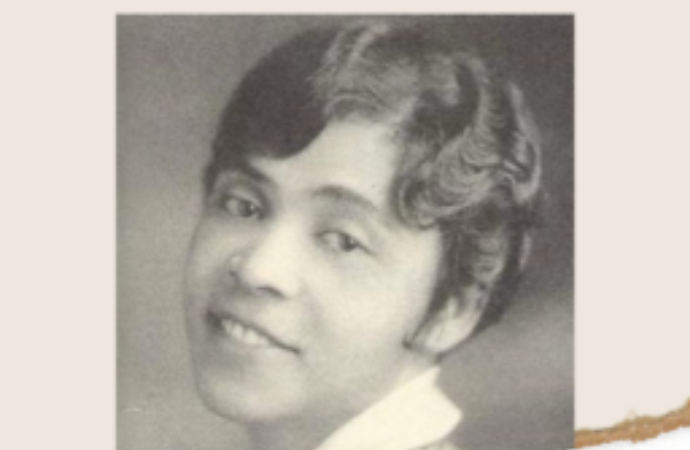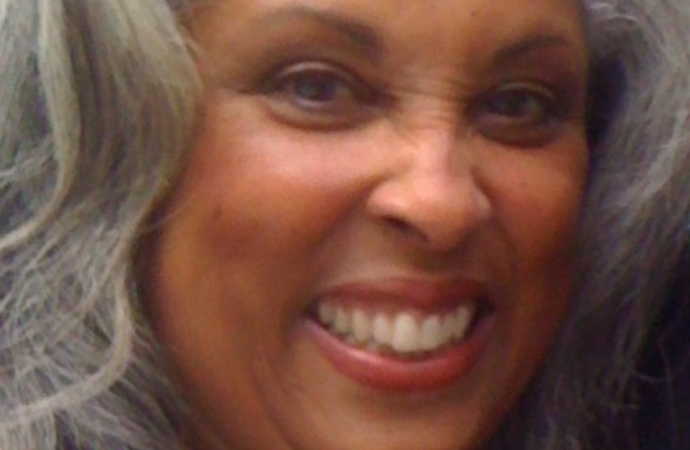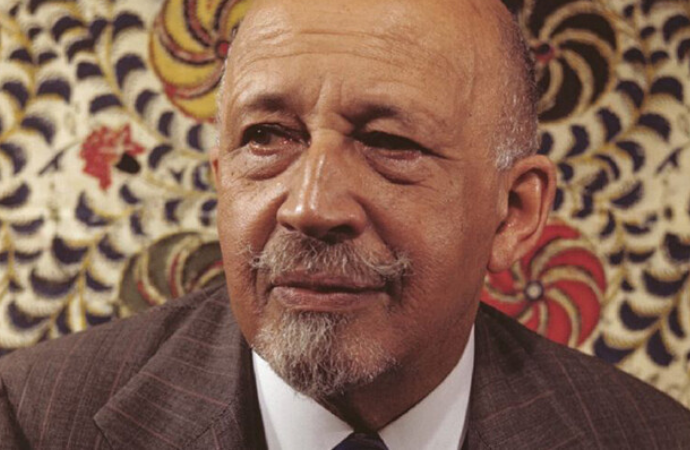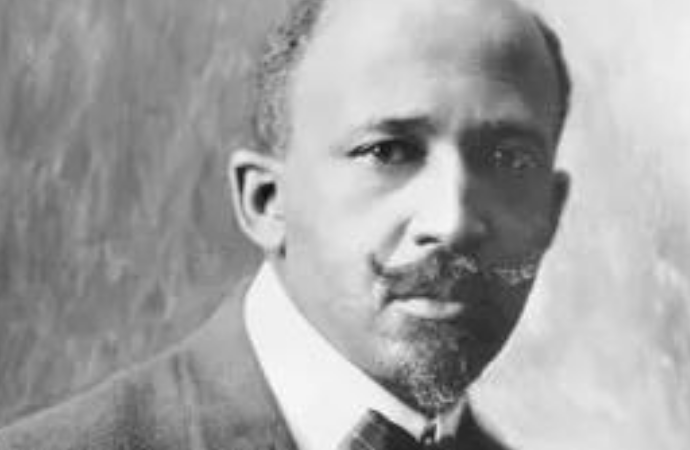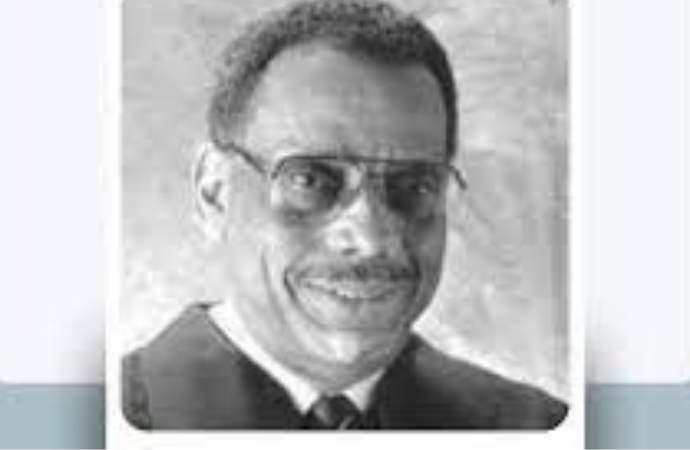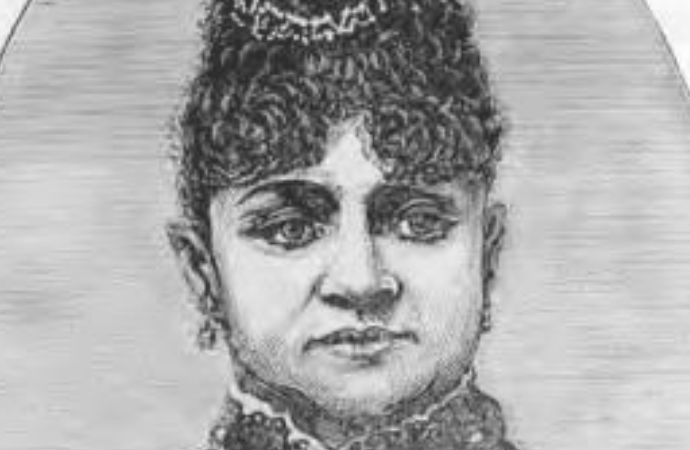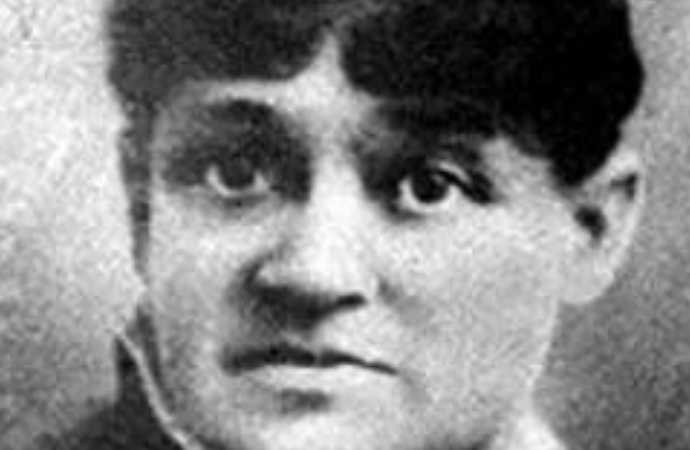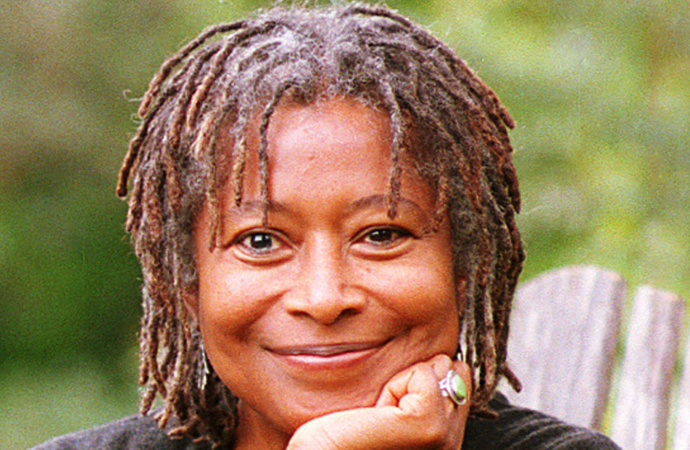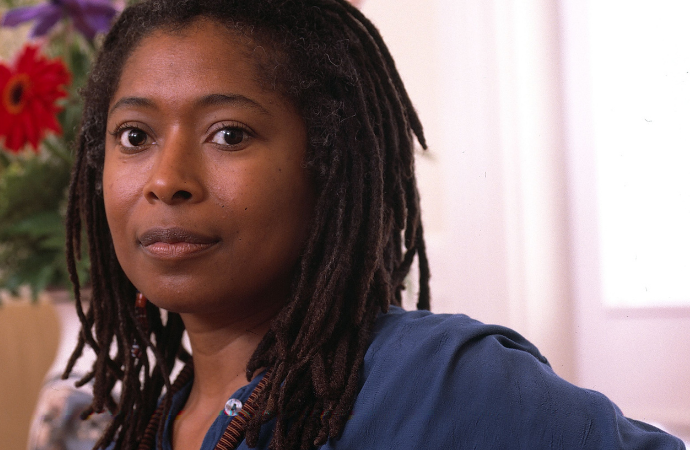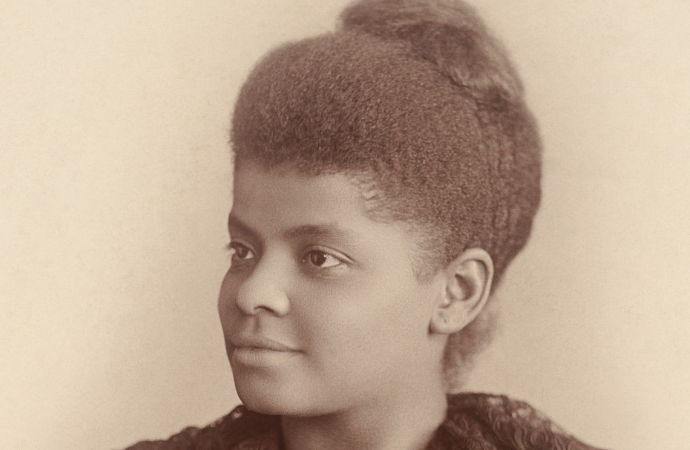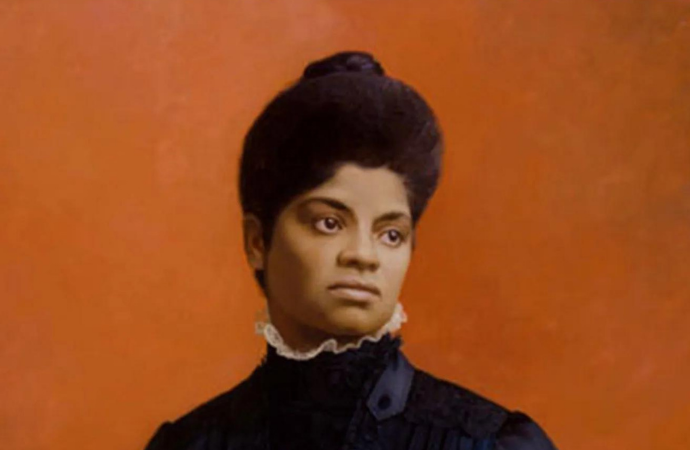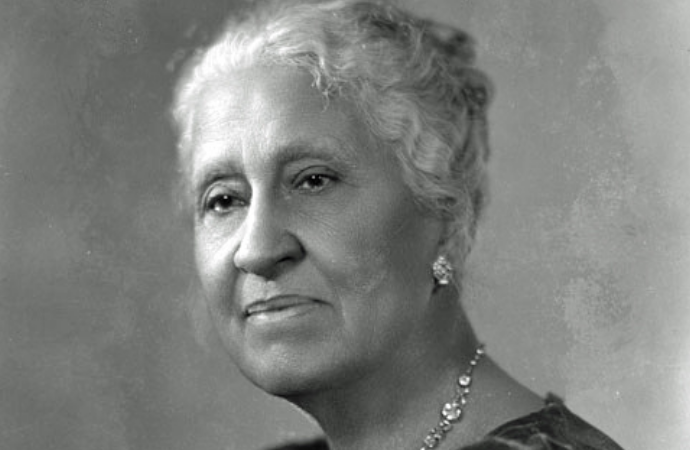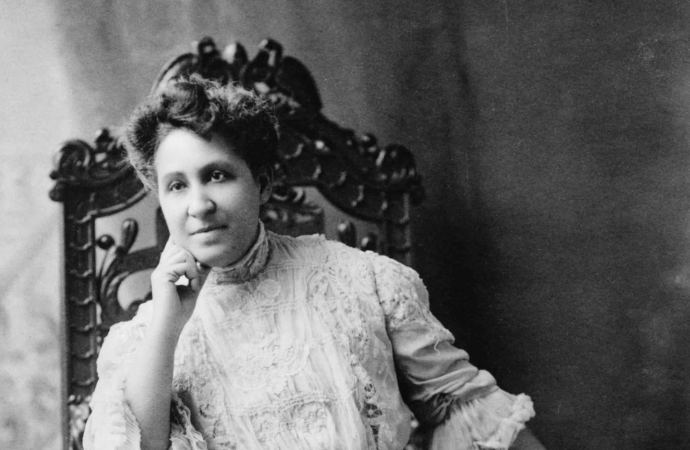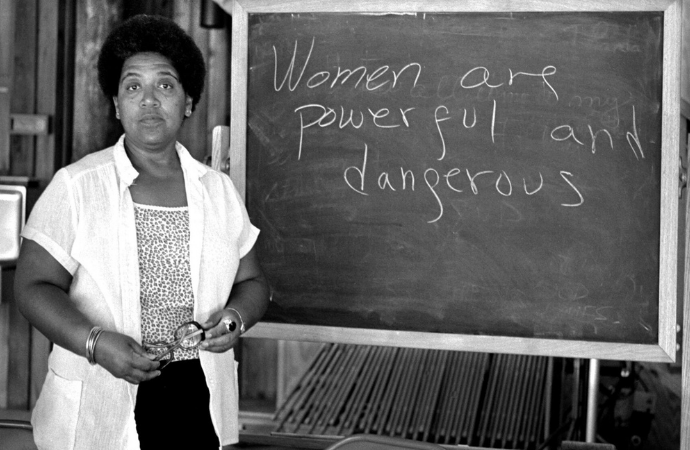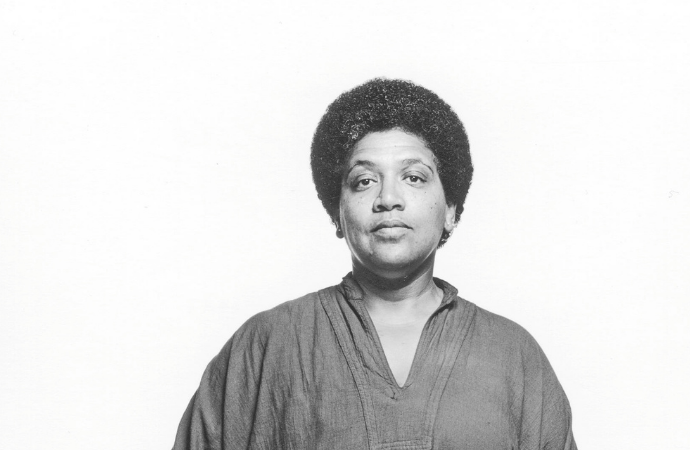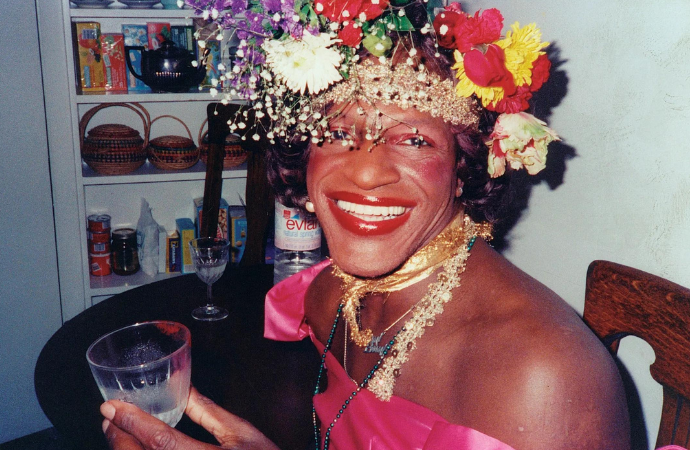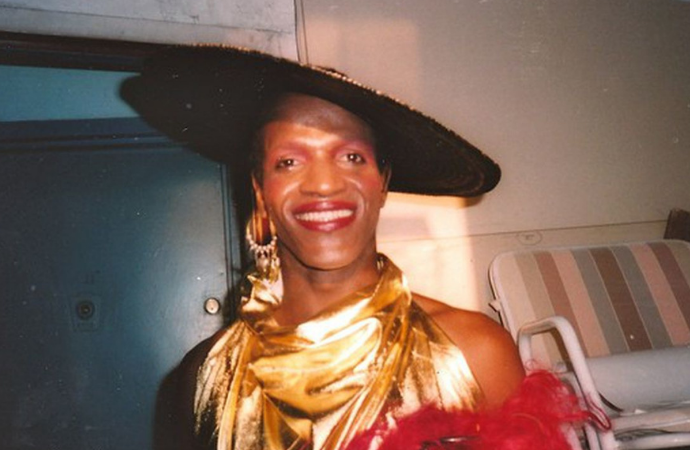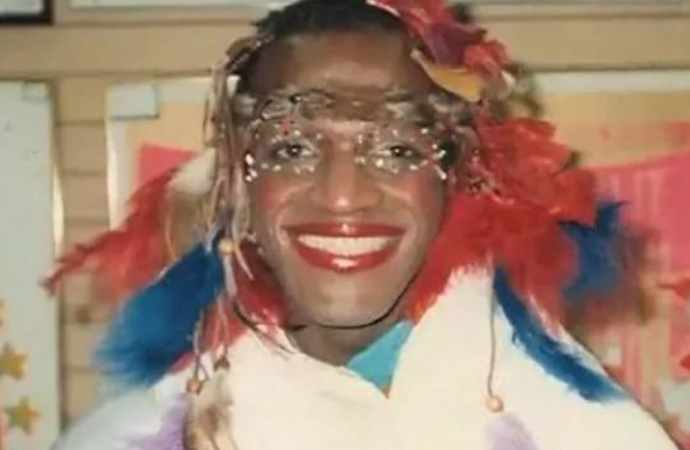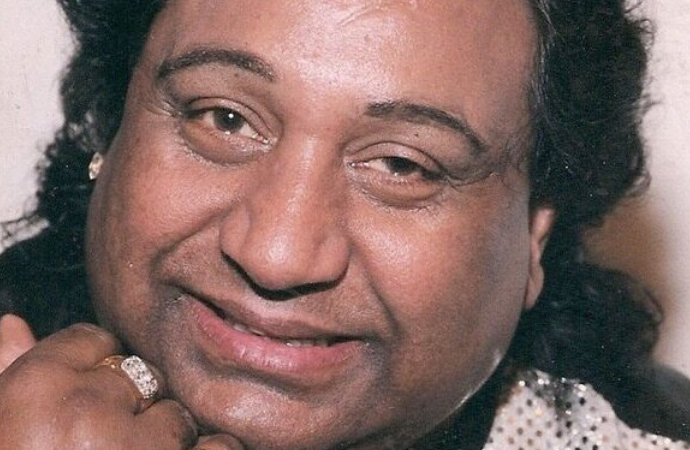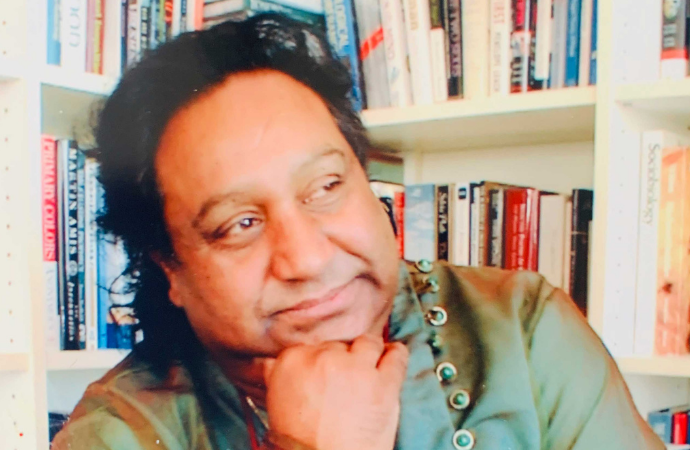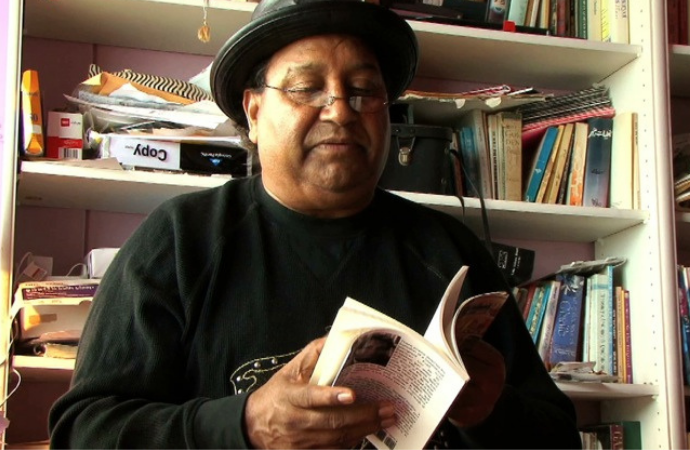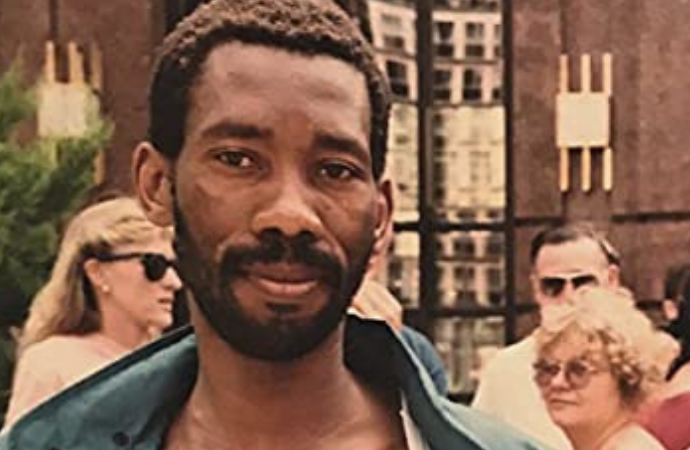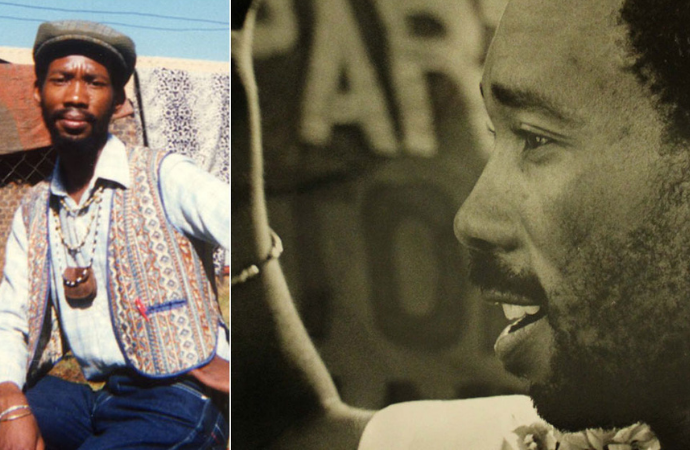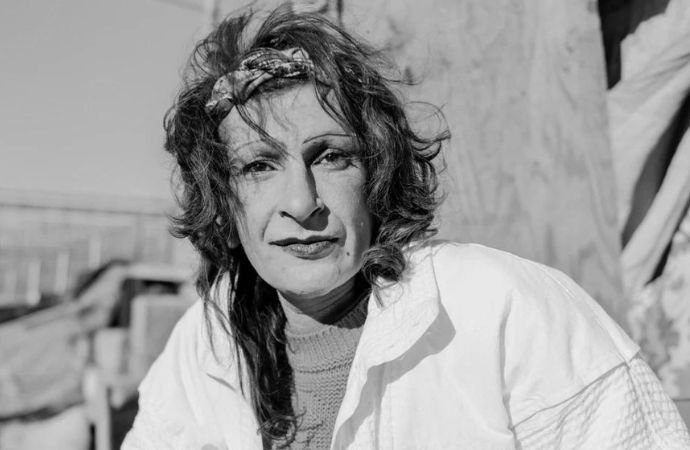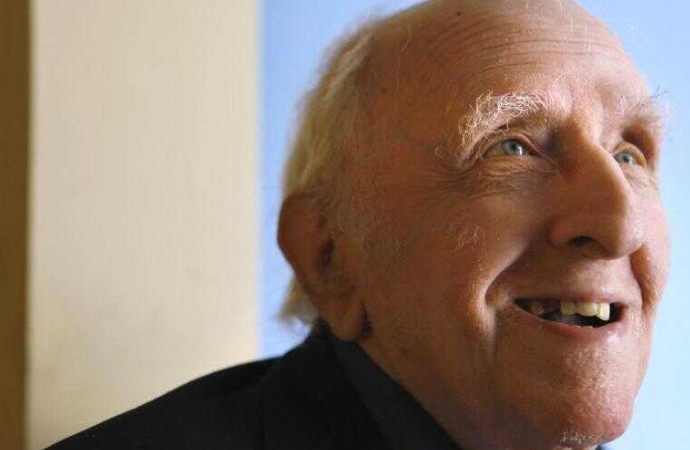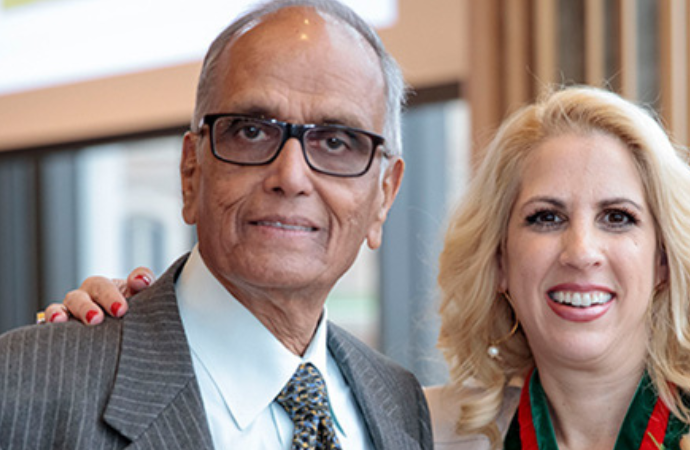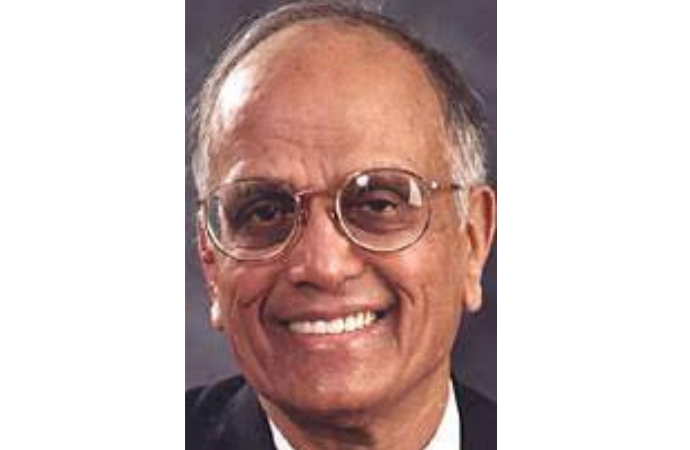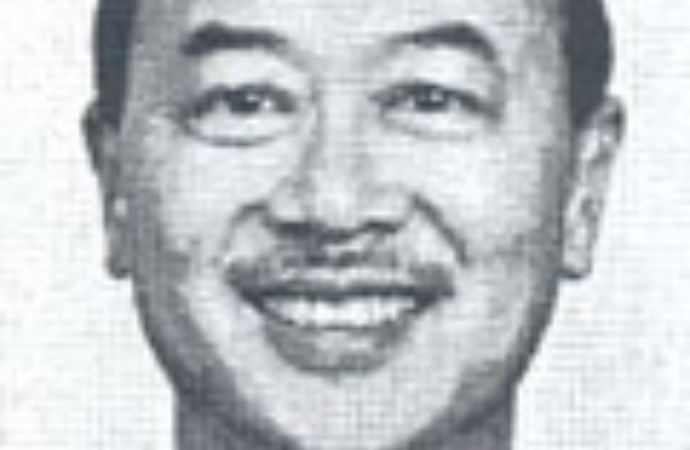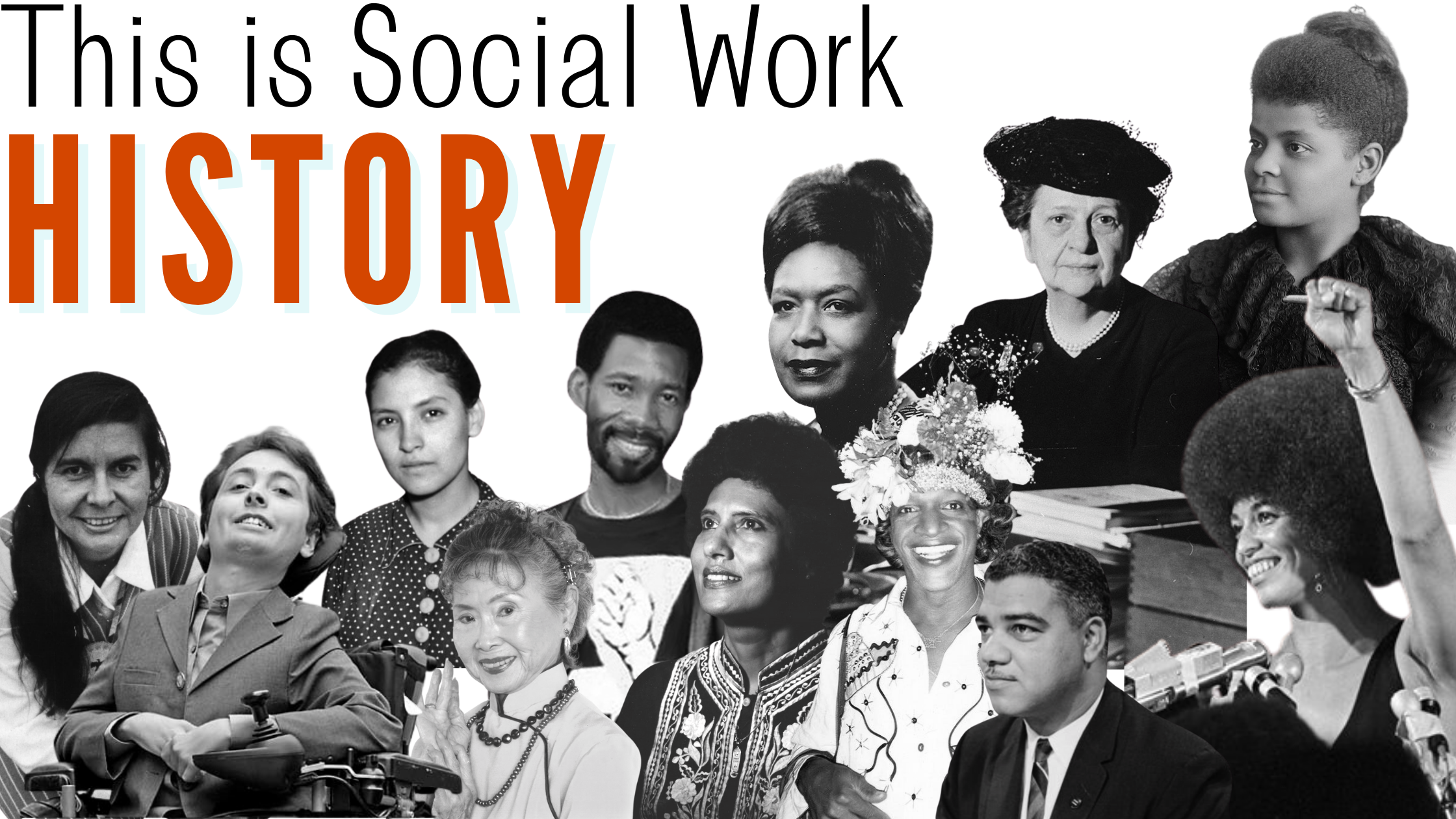
This is the History of Social Work. Most of these figures were probably not taught about or even mentioned in a social work class. Oftentimes we hear about the same people but there is more to Social Work than the one’s claimed to have started it all like Jane Addams and Mary Richmond. Some do not hold the official “social work” title but embody the very essence of the field. However they do include BIPOC, queer, disabled, and many other marginalized populations. Knowledge is power and representation matters. This is the history of social work.
Bernice Catherine Harper (1925 – )
Activist, Writer, Social Worker
Dr. Bernice Catherine Harper was Medical Care Advisor to the Health Care Financing Administration in Washington, D.C. Her career, which has progressed to this most influential federal level, has focused on the area of health care and health care policy formulation.
Read MoreShe has practiced in varied settings and personified the values and ethical standards of the social work profession even in the most difficult and highly charged political environments. Harper earned her MSW Degree from the University of Southern California in 1948, her MSc.PH from Harvard University in 1959, and her LLD Degree from Faith Grant College, Birmingham, Alabama.
She was instrumental in developing long-term program policies, which highlight continuity-of-care, including community, and institutional care, and stresses the importance of psychosocial components. Her commitment to the long-term care of those in need has served to demonstrate the best of the best for the profession and for those in need. Her insight and commitment to professionals, especially social workers, who are under both personal and professional stress as they work with patients in the final phases of their lives, combined with her perspective, academic, and practice skills with their families, motivated her to produce a definitive publication on death and the special needs for professionals to cope with their related stress. The book, Death: The Coping Mechanism of the Health Professional, was in advance of the interest now placed on this area. Harper identified and labeled specific stages of coping with death that are important to understand, especially for professionals living through the process with clients.
Harper’s work at the City of Hope in California, as Chief Social Worker, and her practice with leukemia patients and families sustained her interest in the important needs of those with chronic and long- term illness. She is nationally-recognized for her work and is sought after for training workshops and conferences. Bernice Harper has consistently been referred to as the professional’s professional. She has been able to represent social work values and bring them into policy statements. She is a personification of social work’s value base and has sustained that consistency in the Washington scene through multiple and changing administrations as well as political appointees. She has not compromised the long-term health care needs of those in the country. She also has worked with multiple government organizations around minority services and activities for professional as well as other educational needs.
Harper serves on the Board of Directors for the NASW Foundation and has been active and held leadership positions at NASW and the International Conference on Social Welfare. She was the first recipient of the NASW Foundation’s Knee/Wittman Outstanding Achievement in Health/Mental Health Policy Award. In 2017, Harper was inducted into the California Social Work Hall of Distinction.
Gary Bailey (~ 1955 – )
Social Worker
Gary Bailey, MSW, ACSW, is a native of Cleveland, Ohio. He received his BA from the Eliot Pearson School of Child Study at Tufts University in 1977 and his MSW from Boston University School of Social Work in 1979. He is currently an Associate Professor at Simmons College Graduate School of Social Work where he chairs the Dynamics of Racism and Oppression foundation sequence.
Read MoreHe is a member of the Council on Social Work Education (CSWE) I Hartford Foundation Gero Education Initiative to infuse gerontological content into curriculum. Professor Bailey is the Chair of the Simmons College Black Administrators, Faculty and Staff Council (BAFAS); and Chairs the School of Social Work (SSW) Awards committee. He is a member of the President’s Inaugural Committee.
He holds an appointment as an adjunct Assistant Professor at the Boston University School of Public Health. Professor Bailey is currently the Chairperson of the National Social Work Public Education Campaign and he is a member of the NASW Foundation Board of Directors.
He was the President of NASW from 2003 until 2005. He was the President-elect from 2002-2003. His tenure at NASW National has included serving as the NASW National 2nd Vice President 2000-2002 and as the Association’s Treasurer from 1995-1997. He was a member or the NASW Insurance Trust Board of Trustees. He was the President of the Massachusetts Chapter of NASW from 1993-1995.
Professor Bailey is a past president of the North American Region of the International Federation of Social Workers (IFSW) Berne, Switzerland having served in that role from 2003 until 2006. He was elected Chair of the Policy, Advocacy and Representation Commission in August 2006 at the IFSW Executive Committee meeting in Munich Germany. He is also a member of the IFSW Task Force on Fees. He is a member of the board of the North American and Caribbean Association of Schools of Social Work representing the Council of Social Work Education (CSWE).
Professor Bailey is the recipient of numerous awards and honors. He was named Social Worker of the Year by both the National and Massachusetts NASW in 1998. He was made a Social Work Pioneer (www.naswfoundation.org/pioneer) by NASW in 2005, making him the youngest individual to receive this honor, joining individuals such as Jane Adams, Whitney M. Young, and Simmons own Dr. Helen Reinherz.
Professor Bailey received the Boston University School of Social Work Alumni Association Award for Outstanding Contributions to the Field of Social Work in 1995. He received the Wayne S Wright Advocacy Award from the Multicultural AIDS Coalition in 1997; the Congressman Gerry Studds Visibility A ward in 1996, and the Bayard Rustin Spirit Award from the AIDS Action Committee of Massachusetts in 1999. He was recognized with an honorary Doctor of Humane Letters degree from the University of Connecticut in 2013.
He has served on numerous Boards and Advisory groups including the Advisory committees for the Massachusetts Departments of Mental Health and Social Services. He chaired the AIDS Action Committee of Boston Board of Directors and was co-chair of the Children’s Hospital Community Advisory Committee. He was a member of the boards of directors at the Phillip Brooks House at Harvard University, the Massachusetts Maternity and Foundling Hospital Foundation, United Homes for Children, the Wang Center for the Performing Arts, and the Center for Family Connections.
He began his career at Family Service of Greater Boston in 1980 working in Services for Older People by providing casework and other services to at-risk elders and their families. He went on to hold numerous positions at Family Service until he left in 1994 to assume the position of Executive Director of Parents and Children’s Services in Boston.
Professor Bailey is highly sought after as a trainer and consultant on topics which include board development; international social work practice; elder and family housing program development; issues pertaining to diversity, social justice and human rights; and working with gay, lesbian, bisexual, and transgender (GLBT) communities. He and his partner Richard McCarthy and their Cairn Terrier, Budd divide their time between their homes in Boston and Provincetown, Massachusetts.
Thyra J. Edwards (1897-1953)
Educator, Social Worker, Journalist, Activist, Labor Organizer
Thyra J. Edwards, born in 1897, the granddaugher of runaway slaves, grew up in Houston, Texas and started her career there as a school teacher. Eventually she moved to Gary, Indiana and later Chicago where she was trained in social work at the Chicago School of Civics and Philanthropy, Edwards pursued her interest in child welfare through a variety of social work positions that showcased her work with children, which gave way to the founding of her own children’s home. Read More
Also keenly interested in labor relations, Edwards studied labor management issues at Brockwood Labor College in New Jersey. Later, she was employed as a social worker. Edwards would eventually become a world lecturer, journalist, labor organizer, women’s rights advocate, and civil rights activist all before her 40th birthday.
By 1944 Edwards was heralded as “one of the most outstanding Negro women in the world.” She had an international approach to social work and viewed her journalistic work, travel seminars, speaking engagements, and union organizing as a part of her role as a professional in the social work arena. By the end of World War II she was the executive director of the Congress of American Women.
Concerned foremost with the plight of women and children, in 1953 Edwards organized the first Jewish child care program in Rome to assist children who had been victims of the Holocaust. From her point of view social work should: advocate for disadvantaged and at-risk populations; focus on issues and problems specifically affecting the well-being of women; and demonstrate the ability to work with diverse populations. Her views are akin to many principles currently articulated by the Council of Social Work Education. Her work was grounded in what modern sociologists call “work systems theory.”
The link between the plight of Blacks throughout the world was a cornerstone of her professional philosophy. At a time when the social work profession in the United States believed that Black social workers should only focus on Blacks in America, Edwards worked with people of all races, nationalities, and ethnicities.
It was that viewpoint that attracted her to the Communist Party while she was living in New York in the 1930s, Edwards publicly supported the Loyalists in the Spanish Civil War and used her role as a correspondent to travel to Europe, Mexico, and the Soviet Union. Her activities with the U.S. Communists drew the attention of the FBI and she was monitored by U.S. government intelligence organizations until her death. Thyra Edwards died in 1953 at the age of 55.
Norma Gray “Cindy” Jones (1951-2017)
Social Worker, Military Officer
Norma Gray Jones was the US Navy’s first African American female social work officer. She served for 21 years as a Navy Commander where her work altered Navy social practices and policies. Her efforts included establishing new programs for entry-level Navy social workers and implementing Family Advocacy treatment programs worldwide.
She held several program management positions to include, Deputy Directory Fleet and Family Support Programs and the Director of Research for the Fleet and Family Support Programs in Millington, TN. She established new billets for Navy social workers in Diego Garcia, and Bahrain. Jones served as Director of Behavioral Health Services at the Naval Hospital, Guantanamo Bay, Cuba, focusing primarily on the “Children Soldiers” population and assisting political prisoners and refugees. Her last position on active duty was, Director of Social Work Department at the Naval Medical Center in Portsmouth, VA. Jones began her military career in San Diego, CA and was then transferred to Adak, Alaska as part of a two-person mental health team, working with military families and family violence issues. The WIC program she established there was used until the base closing in 1996. Jones served as Regional Family Advocacy Representative in London, England, served five major naval bases, and established a position for a naval psychiatrist in the UK, which was a first. She also served as a consultant and trainer to the US Embassies in London and Paris on matters related to family violence.
Fannie Lou Hamer (1917-1977)
Activist, Community Organizer
Fannie Lou Townsend Hamer rose from humble beginnings in the Mississippi Delta to become one of the most important, passionate, and powerful voices of the civil and voting rights movements and a leader in the efforts for greater economic opportunities for African Americans.
Read MoreHamer was born on October 6, 1917 in Montgomery County, Mississippi, the 20th and last child of sharecroppers Lou Ella and James Townsend. She grew up in poverty, and at age six Hamer joined her family picking cotton. By age 12, she left school to work. In 1944, she married Perry Hamer and the couple toiled on the Mississippi plantation owned by B.D. Marlowe until 1962. Because Hamer was the only worker who could read and write, she also served as plantation timekeeper.
That summer, Hamer attended a meeting led by civil rights activists James Forman of the Student Non-Violent Coordinating Committee (SNCC) and James Bevel of the Southern Christian Leadership Conference (SCLC). Hamer was incensed by efforts to deny Blacks the right to vote. She became a SNCC organizer and on August 31, 1962 led 17 volunteers to register to vote at the Indianola, Mississippi Courthouse. Denied the right to vote due to an unfair literacy test, the group was harassed on their way home, when police stopped their bus and fined them $100 for the trumped-up charge that the bus was too yellow. That night, Marlow fired Hamer for her attempt to vote; her husband was required to stay until the harvest. Marlow confiscated much of their property. The Hamers moved to Ruleville, Mississippi in Sunflower County with very little.
In June 1963, after successfully completing a voter registration program in Charleston, South Carolina, Hamer and several other Black women were arrested for sitting in a “whites-only” bus station restaurant in Winona, Mississippi. At the Winona jailhouse, she and several of the women were brutally beaten, leaving Hamer with lifelong injuries from a blood clot in her eye, kidney damage, and leg damage.
In 1964, Hamer’s national reputation soared as she co-founded the Mississippi Freedom Democratic Party (MFDP), which challenged the local Democratic Party’s efforts to block Black participation. Hamer and other MFDP members went to the Democratic National Convention that year, arguing to be recognized as the official delegation. When Hamer spoke before the Credentials Committee, calling for mandatory integrated state delegations, President Lyndon Johnson held a televised press conference so she would not get any television airtime. But her speech, with its poignant descriptions of racial prejudice in the South, was televised later. By 1968, Hamer’s vision for racial parity in delegations had become a reality and Hamer was a member of Mississippi’s first integrated delegation.
In 1964 Hamer helped organize Freedom Summer, which brought hundreds of college students, Black and white, to help with African American voter registration in the segregated South. In 1964, she announced her candidacy for the Mississippi House of Representatives but was barred from the ballot. A year later, Hamer, Victoria Gray, and Annie Devine became the first Black women to stand in the U.S. Congress when they unsuccessfully protested the Mississippi House election of 1964. She also traveled extensively, giving powerful speeches on behalf of civil rights. In 1971, Hamer helped to found the National Women’s Political Caucus.
Frustrated by the political process, Hamer turned to economics as a strategy for greater racial equality. In 1968, she began a “pig bank” to provide free pigs for Black farmers to breed, raise, and slaughter. A year later she launched the Freedom Farm Cooperative (FFC), buying up land that Blacks could own and farm collectively. With the assistance of donors (including famed singer Harry Belafonte), she purchased 640 acres and launched a coop store, boutique, and sewing enterprise. She single-handedly ensured that 200 units of low-income housing were built—many still exist in Ruleville today. The FFC lasted until the mid-1970s; at its heyday, it was among the largest employers in Sunflower County. Extensive travel and fundraising took Hamer away from the day-to-day operations, as did her failing health, and the FFC hobbled along until folding. Not long after, in 1977, Hamer died of breast cancer at age 59.
Whitney M. Young Jr. (1921-1971)
Activist, Presidential Advisor, Social Worker
Whitney Young was an American civil rights leader. He spent most of his career working to end employment discrimination in the United States and turning the National Urban League from a relatively passive civil rights organization into one that aggressively worked for equitable access to socioeconomic opportunity for the historically disenfranchised.
Read MoreAfter earning his social work master’s from the University of Minnesota, he went on to work for The Urban League. The Urban League had traditionally been a cautious and moderate organization with many white members. During Young’s ten-year tenure at the League, he brought the organization to the forefront of the American Civil Rights Movement. He both greatly expanded its mission and kept the support of influential white business and political leaders. A noted civil rights leader and statesman, he worked to eradicate discrimination against blacks and poor people. He served on numerous national boards and advisory committees and received many honorary degrees and awards —including the Medal of Freedom (1969), presented by President Lyndon Johnson—for his outstanding civil rights accomplishments. Despite his reluctance to enter politics himself, Young was an important advisor to Presidents Kennedy, Johnson, and Nixon.
W.E.B Du Bois (1868–1963)
Activist, Journalist, Historian, Sociologist, Novelist, Philosopher
Before becoming a founding member of NAACP, W.E.B. Du Bois was already well known as one of the foremost Black intellectuals of his era. The first Black American to earn a PhD from Harvard University, Du Bois published widely before becoming NAACP’s director of publicity and research and starting the organization’s official journal, The Crisis, in 1910.
Read MoreDu Bois, a scholar at the historically Black Atlanta University, established himself as a leading thinker on race and the plight of Black Americans. He challenged the position held by Booker T. Washington, another contemporary prominent intellectual, that Southern Blacks should compromise their basic rights in exchange for education and legal justice. He also spoke out against the notion popularized by abolitionist Frederick Douglass that Black Americans should integrate with white society. In an essay published in The Atlantic Monthly in 1897, “Strivings of the Negro People,” Du Bois wrote that Black Americans should instead embrace their African heritage even as they worked and lived in the United States.
Du Bois published his seminal work The Souls of Black Folk in 1903. In this collection of essays, Du Bois described the predicament of Black Americans as one of “double consciousness”: “One ever feels his twoness, — an American, a Negro; two souls, two thoughts, two unreconciled strivings; two warring ideals in one dark body, who dogged strength alone keeps it from being torn asunder.” The term “double consciousness” has come to be widely used as a theoretical framework to apply to other dynamics of inequality.
When looking at his beginning work with the NAACP, it is clear he made meaningful contributions. Du Bois became the editor of the organization’s monthly magazine, The Crisis, using his perch to draw attention to the still widespread practice of lynching, pushing for nationwide legislation that would outlaw the cruel extrajudicial killings. A 1915 article in the journal gave a year-by-year list of more than 2,700 lynchings over the previous three decades.
Du Bois, who considered himself a socialist, also published articles in favor of unionized labor, although he called out union leaders for barring Black membership. Under Du Bois’s guidance, the journal attracted a wide readership, reaching 100,000 in 1920, and drew many new supporters to NAACP. With Du Bois as its mouthpiece, NAACP came to be known as the leading protest organization for Black Americans.
“One ever feels his twoness, — an American, a Negro; two souls, two thoughts, two unreconciled strivings; two warring ideals in one dark body, who dogged strength alone keeps it from being torn asunder.”
Du Bois served as editor of The Crisis until 1934, when he resigned following a rift with NAACP leadership over his controversial stance on segregation. He viewed the “separate but equal” status as an acceptable position for Blacks. Du Bois also resigned from the NAACP board and returned to Atlanta University.
After a ten-year hiatus, Du Bois came back to NAACP as the director of special research from 1944 to 1948. In this role, he attended the founding convention for the United Nations, channeling his energies toward lobbying the global body to acknowledge the suffering of Black Americans. He wrote the famous NAACP publication, “An Appeal to the World,” a precursor to a report charging the United States with genocide for its ugly history of state-sanctioned lynchings. Du Bois also turned a spotlight onto the injustices of colonialism, urging the United Nations to use its influence to take a stand against such exploitative regimes.
Throughout his life, Du Bois was active in the Pan-Africanism movement, attending the First Pan-African Conference in London in 1900. He later organized a series of Pan-African Congress meetings around the world in 1919, 1921, 1923, and 1927, bringing together intellectuals from Africa, the West Indies, and the United States.
At the end of his life, Du Bois embarked on an ambitious project to create a new encyclopedia on the African diaspora, funded by the government of Ghana. A citizen of the world until the end, the 93-year-old Du Bois moved to Ghana to manage the project, acquiring citizenship of the African country in 1961. Du Bois died in Ghana on Aug. 27, 1963, the day before the historic March on Washington.
Herman George Canady (1901-1970)
Psychologist
Herman George Canady was a prominent Black clinical and social psychologist. He is credited with being the first psychologist to study the influence of rapport between an IQ test proctor and the subject, specifically researching how the race of a test proctor can create bias in IQ testing. He also helped to provide an understanding of testing environments that were suitable to help Black students succeed.
Carrie Steele Logan (1829-1900)
Activist
Mrs. Carrie Steele, worked as a maid at the Union Railroad Station in downtown Atlanta in the late 1800s when she discovered that abandoned babies and children were being left at the station. She began to care for these children, placing them in an empty boxcar during the day and taking them home with her at night. In 1888, Mrs. Steele chartered an organization, eventually selling her home and generating additional funds from the community to build the first facility called the “Carrie Steele Orphan Home”.
Alice Walker (1944- )
Author, Social Worker
Pulitzer Prize-winning author Alice Walker pursued her higher education in social work at Sarah Lawrence College. After graduating in 1965, she moved to Mississippi to join the Civil Rights Movement and welfare rights campaigns. Walker continued working in the civil rights movement while teaching at various universities.
Read MoreDuring this time she also became a major voice in the emerging feminist movement led by mostly white middle-class women Her writing career took off after becoming an editor for Ms. magazine. In 1982, Alice Walker published her best-known novel, The Color Purple, which was famously adapted onto film by Steven Spielberg.
Ida B. Wells (1862-1931)
Activist, Investigative Journalists, Educator, Researcher
Ida B. Wells-Barnett was a prominent journalist, activist, and researcher, in the late 19th and early 20th centuries. In her lifetime, she battled sexism, racism, and violence. As a skilled writer, Wells-Barnett also used her skills as a journalist to shed light on the conditions of African Americans throughout the South.
Read MoreIda Bell Wells was born into slavery during the Civil War. Once the war ended Wells-Barnett’s parents became politically active in Reconstruction Era politics and instilled into Wells the importance of education. Wells-Barnett enrolled at Rust College but was expelled when she started a dispute with the university president. In 1878, Wells-Barnett was informed that a yellow fever epidemic had hit her hometown. The disease took both of Wells-Barnett’s parents and her infant brother. Left to raise her brothers and sister, she took a job as a teacher so that she could keep the family together.
However, after the lynching of one of her friends, Wells-Barnett turned her attention to white mob violence. She became skeptical about the reasons black men were lynched and set out to investigate several cases. She published her findings in a pamphlet and wrote several columns in local newspapers. She exposed about an 1892 lynching enraged locals, who burned her press and drove her from Memphis. After a few months, the threats became so bad she was forced to move to Chicago, Illinois.
In 1893, Wells-Barnett, joined other African American leaders in calling for the boycott of the World’s Columbian Exposition. The boycotters accused the exposition committee of locking out African Americans and negatively portraying the black community. In 1895, Wells-Barnett married famed African American lawyer Ferdinand Barnett. Together, the couple had four children.
Wells-Barnett traveled internationally, shedding light on lynching to foreign audiences. Abroad, she openly confronted white women in the suffrage movement who ignored lynching. Because of her stance, she was often ridiculed and ostracized by women’s suffrage organizations in the United States. Nevertheless, Wells-Barnett remained active the women’s rights movement. She was a founder of the National Association of Colored Women’s Club which was created to address issues dealing with civil rights and women’s suffrage. Although she was in Niagara Falls for the founding of the National Association for the Advancement of Colored People (NAACP), her name is not mentioned as an official founder. Late in her career Wells-Barnett focused on urban reform in the growing city of Chicago. She died on March 25th, 1931.
Samuel L. Jackson (1948- )
Social Worker, Actor
Before becoming a critically acclaimed actor, Samuel L. Jackson attended Atlanta’s Morehouse College and majored in social work. While attending Morehouse College in Atlanta in 1969, he protested the lack of black members on the board of trustees. He was expelled from the college for his protest (which involved locking trustees into a building!) and later returned to pursue acting after working for two years as a social worker in Los Angeles.
He joined the Civil Rights Movement to advocate for Black Power and equal rights. By 1972, he made his feature film debut in Together for Days. Now, Samuel L. Jackson has a total box office gross of over $4.6 million from movies like Pulp Fiction and The Negotiator. Now he’s won multiple NAACP Image Awards, Golden Globes, and is an acclaimed actor and director.
Mary Church Terrell (1863-1954)
Activist
Mary Eliza Church Terrell was a well-known African American activist who championed racial equality and women’s suffrage in the late 19th and early 20th century. An Oberlin College graduate, Terrell was part of the rising black middle and upper class who used their position to fight racial discrimination.
Read MoreThe daughter of former slaves, Terrell was born on September 23, 1863 in Memphis, Tennessee. Her father, Robert Reed Church, was a successful businessman who became one of the South’s first African American millionaires. Her mother, Louisa Ayres Church, owned a hair salon. She had one brother. Their affluence and belief in the importance of education enabled Terrell to attend the Antioch College laboratory school in Ohio, and later Oberlin College, where she earned both Bachelor’s and Master’s degrees. Terrell spent two years teaching at Wilburforce College before moving to Washington DC, in 1887 to teach at the M Street Colored High School. There she met, and in 1891, married Heberton Terrell, also a teacher. The Terrells had one daughter and later adopted a second daughter.
Her activism was sparked in 1892, when an old friend, Thomas Moss, was lynched in Memphis by whites because his business competed with theirs. Terrell joined Ida B. Wells-Barnett in anti-lynching campaigns, but Terrell’s life work focused on the notion of racial uplift, the belief that blacks would help end racial discrimination by advancing themselves and other members of the race through education, work, and community activism. It was a strategy based on the power of equal opportunities to advance the race and her belief that as one succeeds, the whole race would be elevated. Her words—“Lifting as we climb”—became the motto of the National Association of Colored Women (NACW), the group she helped found in 1896. She was NACW president from 1896 to 1901.
As NACW president, Terrell campaigned tirelessly among black organizations and mainstream white organizations, writing and speaking extensively. She also actively embraced women’s suffrage, which she saw as essential to elevating the status of black women, and consequently, the entire race. She actively campaigned for black women’s suffrage. She even picketed the Wilson White House with members of the National Woman’s Party in her zeal for woman suffrage. Terrell fought for woman suffrage and civil rights because she realized that she belonged “to the only group in this country that has two such huge obstacles to surmount…both sex and race.”
In 1909, Terrell was among the founders and charter members of the National Association for the Advancement of Colored People. Then in 1910, she co-founded the College Alumnae Club, later renamed the National Association of University Women.
Following the passage of the 19th amendment, Terrell focused on broader civil rights. In 1940, she published her autobiography, A Colored Woman in a White World, outlining her experiences with discrimination. In 1948, Terrell became the first black member of the American Association of University Women, after winning an anti-discrimination lawsuit. In 1950, at age 86, she challenged segregation in public places by protesting the John R. Thompson Restaurant in Washington, DC. She was victorious when, in 1953, the Supreme Court ruled that segregated eating facilities were unconstitutional, a major breakthrough in the civil rights movement. Terrell died four years later in Highland Beach, Maryland.
Dorothy Height (1912-2010)
Activist, Community Organizer, Psychologist, Social Worker
Dorothy Irene Height was born on March 24th, 1912 in Richmond, Virginia. Her family later moved to Rankin, Pennsylvania where she excelled as a student. Height eventually received a scholarship to attend college. In 1929, she was admitted to Barnard College but was not allowed to attend because the school did not admit African Americans. Read More
Instead, Height went on to graduate from New York University where she received a bachelor’s in education and master’s in psychology. Her first job was as a social worker in Harlem, New York. She later joined the staff of the Harlem Young Women’s Christian Association (YWCA). In no time, Height became a leader in the local organization. She created diverse programs and pushed the organization to integrate YWCA facilities nationwide.
During a chance encounter with African American leader Mary McLeod Bethune, Height was inspired to begin working with the National Council of Negro Women (NCNW). Through the NCNW, Height focused on ending the lynching of African Americans and restructuring the criminal justice system. In 1957, she became the fourth president of the NCNW. Under her leadership, the NCNW supported voter registration in the South. The NCNW also financially aided several civil rights activists throughout the country. Height was president of NCNW for 40 years.
Height’s prominence in the Civil Rights Movement and unmatched knowledge in organizing, meant she was regularly called to give advice on political issues. Eleanor Roosevelt, Dwight D. Eisenhower, and Lyndon B. Johnson often sought her counsel. In 1963, Height, along with other civil rights activists organized the March on Washington for Jobs and Freedom. Although she played a role in the march, she was not invited to speak. In fact, originally no women were included on the program at all. Height and Anna Arnold Hedgeman persuaded the other organizers to allow a woman to speak. Despite the apparent gender discrimination in the Civil Rights Movement, Height continued working on the front lines.
In addition to her work in the United States, Height traveled extensively. She served as a visiting professor at the University of Delhi, India and with the Black Women’s Federation of South Africa. For all her efforts during the Civil Rights Movement, Height was awarded and recognized by many organizations. In 1989, she received the Citizens Medal Award from President Ronald Reagan and in 2004, Height was honored with the Congressional Gold Medal. The same year, Height was inducted into the Democracy Hall of Fame International. She also received an estimated 24 honorary degrees. On April 20th, 2010, Height passed away at the age of 98. Her funeral was held at Washington National Cathedral.
Dr Charles R Drew (1904-1950)
Innovative Humanitarian, Surgeon, Researcher
Charles Richard Drew, the African American surgeon and researcher who organized America’s first large-scale blood bank and trained a generation of black physicians at Howard University, was born in Washington, DC, on June 3, 1904. His upbringing emphasized academic education and church membership, as well as civic knowledge and personal competence, responsibility, and independence.
Read MoreWashington was still racially segregated during that era, but its large African American community included many prosperous and well-educated families, and their public schools were often excellent. Drew attended Stevens Elementary and then Dunbar High School, which was then one of the best college preparatory schools–for blacks or whites–in the country. Though bright, he was not an outstanding student; instead, he devoted much of his effort to athletics, where he excelled.
Drew graduated from Dunbar in 1922 and went to Amherst College in Massachusetts on an athletic scholarship. His achievements on the Amherst track and football teams were legendary; long after he distinguished himself as a blood banking pioneer and medical educator, many still remembered him best as an athlete. Drew received his AB from Amherst in 1926. To earn money for medical school, he took a job as athletic director and instructor of biology and chemistry at Morgan College (now Morgan State University), in Baltimore. During his two years at Morgan, his coaching transformed its mediocre sports teams into serious collegiate competitors.
The racial segregation of the pre-Civil Rights era constrained Drew’s options for medical training. Some prominent medical schools, such as Harvard, accepted a few non-white students each year, but most African Americans aspiring to medical careers trained at black institutions such as the Howard University College of Medicine in Washington, DC, or Meharry Medical College in Nashville, Tennessee. Drew applied to Howard, but was not accepted because he lacked enough credits in English from Amherst. Harvard accepted him, but wanted to defer his admission to the following year. Not wanting to wait, Drew applied to the McGill University Faculty of Medicine in Montréal, which had a reputation for better treatment of minorities.
McGill University allowed its graduate and professional students to play on school teams, and Drew once again became a star athlete. But he also became a star student, winning several important prizes and fellowships, and graduating second in a class of 137, in 1933. During his internship and surgical residency at Montréal General Hospital, 1933-1935, he worked closely with bacteriology professor John Beattie, who was exploring ways to treat shock with transfusion and other fluid replacement. This work fostered an interest in transfusion medicine that Drew would later pursue in his blood bank research. Drew hoped to extend his training with a surgical residency in the United States, preferably at the Mayo Clinic, but major American medical centers rarely took on African American residents, partly because many white patients in that era would refuse to be treated by black physicians. In 1935, he joined the faculty at Howard University College of Medicine, starting as a pathology instructor, and then progressing to surgical instructor and to chief surgical resident at Freedmen’s Hospital.
Howard’s College of Medicine was upgrading its programs with help from the Rockefeller Foundation’s General Education Board. This effort included appointing well-qualified white department chairs to set up and run residency programs and train black successors, along with fellowships for further training of junior faculty. Drew trained with Department of Surgery chair Edward Lee Howes for three years and then got a fellowship to train with eminent surgeon Allen O. Whipple at New York’s Presbyterian Hospital, while earning a doctorate in medical science from Columbia University. At Presbyterian, he worked with John Scudder on studies relating to treating shock, fluid balance, blood chemistry and preservation, and transfusion. His main project with Scudder–and the basis for his dissertation–was an experimental blood bank at Presbyterian, opened in August 1939. In June 1940, Drew received his doctorate in medical science from Columbia, becoming the first African American to earn the degree there.
With his fellowship completed, Drew returned to Howard University to take up duties as assistant professor of surgery. He was called back to New York in September 1940 to direct the Blood for Britain project. Great Britain, then under attack by Germany, was in desperate need of blood and plasma to treat military and civilian casualties. In August, Presbyterian and five other New York hospitals had begun a collaborative effort to collect and ship plasma (the fluid, non-cellular portion of blood) to Britain. Although others had developed the basic methods for plasma use, Drew, as medical director, instituted uniform procedures and standards for collecting blood and processing blood plasma at the participating hospitals. When the program ended in January 1941, Drew was appointed assistant director of a pilot program for a national blood banking system, jointly sponsored by the National Research Council and the American Red Cross. Among his innovations were mobile blood donation stations, later called “bloodmobiles.” Ironically, as the blood bank effort expanded in preparation for America’s entry into the war, the armed forces initially stipulated that the Red Cross exclude African Americans from donating; thus Drew, a leading expert in blood banking, was ineligible to participate in the program he helped establish. The policy was soon modified to accept blood donations from blacks, but required that these be segregated. Throughout the war, Drew criticized these policies as unscientific and insulting to African Americans.
While working on the Blood for Britain project, Drew also passed his American Board of Surgery exams, receiving certification early in 1941. He returned to Howard University and in October became chair of the Department of Surgery and Chief of Surgery at Freedmen’s Hospital. He also became the first African American to be appointed an examiner for the American Board of Surgery. For the next nine years he devoted himself to training and mentoring his medical students and surgical residents, and raising standards in black medical education. He also campaigned against the exclusion of black physicians from local medical societies, medical specialty organizations, and the American Medical Association.
Drew’s innovative work was recognized by awards and honors including the 1942 E. S. Jones Award for Research in Medical Science from the John A. Andrew Clinic in Tuskegee, AL; an appointment to the American-Soviet Committee on Science in 1943; the 1944 Spingarn Medal from the NAACP, for his work on blood and plasma; honorary doctorates from Virginia State College (1945) and Amherst College (1947); and election to the International College of Surgeons in 1946.
Drew died on April 1, 1950, in Burlington, North Carolina, from injuries sustained in a car accident while en route to a conference. Despite the prompt and competent care he received from the white physicians at a nearby hospital, he was too badly injured to survive. Drew’s tragic death generated a persistent myth that he died because he was denied admission to the white hospital, or was denied a transfusion, but such stories have been debunked repeatedly. Though he died prematurely, Drew left a substantial legacy, embodied in his blood bank work and especially in the graduates of the Howard University College of Medicine.
Angela Davis (1944- )
Activist, Educator, Author
A black militant American activist, Davis studied at home and abroad (1961–67) before becoming a doctoral candidate at the University of California. Because of her political opinions, despite an excellent record as an instructor at the university’s Los Angeles campus, the California Board of Regents in 1970 refused to renew her position as professor in philosophy.
Read MoreDespite this in 1991, Davis became a professor in the field of the history of consciousness at the University of California, Santa Cruz. In 1995, amid much controversy, she was appointed a presidential chair. An advocate for black prisoners in the 60s and 70s, she was close with George Jackson, who was one of the Soledad Brothers. His brother Jonathan was one of four killed in an abortive/kidnapping attempt from the Hall of Justice in Marin county, California on August 7, 1970. Davis was suspected of being complicit and became one of the FBIs most wanted criminals. She was arrested in New York City in October 1970, and returned to California to face chariges of kidnapping, murder, and conspiracy; She was later aquited of all charges by an all-white jury. She published an autobiography in 1974 and later in 1980 she ran for US vice president on an unsuccessful Communist Party ticket.
Audre Lorde (1934-1992)
Activist, Poet, Educator
A self-described “black, lesbian, mother, warrior, poet,” Audre Lorde dedicated both her life and her creative talent to confronting and addressing injustices of racism, sexism, classism, and homophobia. Lorde was born in New York City to West Indian immigrant parents. She attended Catholic schools before graduating from Hunter High School and published her first poem in Seventeen magazine while still a student there.
Read MoreOf her poetic beginnings Lorde commented in Black Women Writers: “I used to speak in poetry. I would read poems, and I would memorize them. People would say, well what do you think, Audre. What happened to you yesterday? And I would recite a poem and somewhere in that poem would be a line or a feeling I would be sharing. In other words, I literally communicated through poetry. And when I couldn’t find the poems to express the things I was feeling, that’s what started me writing poetry, and that was when I was twelve or thirteen.”
Lorde earned her BA from Hunter College and MLS from Columbia University. She was a librarian in the New York public schools throughout the 1960s. She had two children with her husband, Edwin Rollins, a white, gay man, before they divorced in 1970. In 1972, Lorde met her long-time partner, Frances Clayton. She also began teaching as poet-in-residence at Tougaloo College. Her experiences with teaching and pedagogy—as well as her place as a Black, queer woman in white academia—went on to inform her life and work. Indeed, Lorde’s contributions to feminist theory, critical race studies, and queer theory intertwine her personal experiences with broader political aims. Lorde articulated early on the intersections of race, class, and gender in canonical essays such as “The Master’s Tools Will Not Dismantle the Master’s House.”
Marsha P. Johnson (1945 –1992)
Activist, Sex Worker, Community Organizer
Marsha “Pay it No Mind” Johnson (1945-1992) was a Black trans woman who was a force behind the Stonewall Riots and surrounding activism that sparked a new phase of the LGBTQ+ movement in 1969. Along with Sylvia Rivera, she established the Street Transvestite Action Revolutionaries (STAR) in 1970–a group committed to supporting transgender youth experiencing homelessness in New York City.
Read MoreMarsha P. Johnson was tragically murdered on July 6, 1992 at the age of forty-six. Her case was originally closed by the NYPD as an alleged suicide, but transgender activist Mariah Lopez fought for it to be reopened for investigation in 2012. Marsha P. Johnson is now one of the most venerated icons in LGBTQ+ history, has been celebrated in a series of books, documentaries, and films. Her actions and words continue to inspire trans activism and resistance, and will continue to do so well into the future.
Ifti Nasim (1946-2011)
Activist, Poet,
Ifti Nasim was likely the first openly gay poet to originate from Pakistan. In his early 20’s, he emigrated to the U.S. to escape persecution for his sexual orientation. He became known locally for establishing Sangat, an organization to support LGBT South-Asian youth, and internationally for publishing Narman, a poetry collection deemed to be the first open expression of homosexual themes written in Urdu. A long-term resident of Chicago, Nasim was inducted into the city’s Gay and Lesbian Hall of Fame in 1996 but never became a household name beyond the local accolade.
Read MoreNevertheless, as a trailblazing, flamboyant figurehead who courageously forged a path for himself rather than concede to the expectations surrounding him, Nasim deserves greater recognition and honor for his work. In particular, Nasim should be remembered for his significant role in establishing safe spaces for the South Asian LGBTQ community. He displayed that they could lead truthful and happy lives and worked to build institutions that would allow people like himself to adjust and thrive in the world.
Ifti Nasim was born on September 15, 1946, in Faisalabad, Pakistan (then called Lyallpur), shortly before its independence. Nasim learnt Kathak (one of the eight major forms of Indian classical dance) and danced privately amongst close friends. He also started learning and writing poetry, studying all the classic works of Urdu and Punjabi (Indo-Aryan language native to Pakistan and India) poets; according to Nasim, writing poetry while in Pakistan was a huge source of catharsis for him. At age sixteen, though, Nasim was reading a politically charged poem of his at a protest against martial law when a soldier entered the room and shot him in the leg. He was spared getting hit by any more bullets, but Nasim wrapped his own leg and wobbled home, not telling anyone in his family of the incident. The next day, his sister discovered blood and Nasim’s infected wound. The poet was subsequently treated but bedridden for six months, ruining his potentially promising career in classical Kathak dance.
As he matured into his later teenage years, Nasim realized that he was still attracted to men, and anticipating that his family would try to marry him off to a girl, felt he could no longer stay in Pakistan. Nasim’s ultimate decision to flee his homeland was, therefore, one made out of necessity. At the age of 21, inspired in part by an article in Life magazine that Nasim recalled describing the U.S. as “the place for gays to be in,” Nasim immigrated from Pakistan to the States, convincing his father in the process that it was just going to be a three-month tour around America. But of course, after Nasim arrived in America, he stayed for good.
Nasim first landed in New York City, where he found a YMCA on 42nd street at which to stay. After getting his bearings, Nasim enrolled at Wayne State University in Detroit and continued writing and working to help bring more of his family over to the States. Several of his siblings later followed him to the U.S., and Nasim himself was eventually naturalized as a U.S. citizen. In 1974, Nasim moved to Chicago, where he would spend the majority of the rest of his life. There, he started exploring the thriving gay disco scene. Though there may have been many a good time had, it was, of course, still the 1970’s in the U.S. of A., so Nasim was also exposed to rampant homophobia, spurring him to join the growing gay liberation movement. It is around this time that Nasim also began to experiment with his style. He soon became known for his ostentatious getups that often involved fur coats, leather pants, flashy jewelry, and a “pimp” hat.
Nasim was also a regular columnist for Weekly Pakistan News, writing compendious columns that unveiled hypocrisies behind some of society’s self-ordained “pious and decent” members. Simultaneously, Nasim started his own successful radio talk show, which he also hosted, and served as president of the South Asian Performing Arts Council of America. Perhaps most important to his legacy, though, Nasim helped found Sangat (Sanskrit for ‘togetherness”) in 1986, one of the earliest South Asian LGBT organizations in the U.S. The organization provided education and support for queer-identifying South Asians in the region and allowed Nasim—no stranger to gay ostracization—to give back to Chicago’s queer community. For such groundbreaking and impactful work, Nasim was inducted into the Chicago LGBT Hall Of Fame in 1996.
Despite the setback, Narman managed to get passed around, and its frankness inspired a younger generation of Pakistani poets to write “honest poetry,” a new genre for the country that became known as “Narmani Poetry.” With regards to “Narmani Poetry,” Nasim reflected: “But the young people, when they read this poetry, that was revelation for them that somebody can write like that too. So they become enamored with this poetry, and they start writing about true feeling, whether it was toward the sex…before that, our object of love was androgynous, you know, you cannot call him male or female, now they started calling whatever.” Essentially sparking a literary movement, Nasim’s Narman has since been distributed around the world, including in England, Norway, Sweden, and Germany.
Simon Nkoli (1957-1998)
Activist
Simon Nkoli was a South African anti-apartheid, gay rights and AIDS activist. He is recognized as the founder of South Africa’s black gay movement. Nkoli was born in Soweto. At a young age, he was sent to live on a farm with his grandparents to avoid apartheid. He spent any spare moment in the classroom. Eventually his thirst for education led him to attend school full-time. At 18, Nkoli came out to his mother.
Read MoreShe sent him to a priest to be “argued” out of it. After this and further attempts by psychologists and doctors proved unsuccessful, Nkoli’s mother allowed her son to move in with his boyfriend.As an activist in the 1970s, he was arrested in the student uprisings against apartheid. In 1979, he joined the Congress of South African Students and the United Democratic Front (UDF).In 1983, Nkoli—frustrated that most gay venues were in districts reserved for whites—joined the Gay Association of South Africa (GASA), a predominantly white gay organization. After realizing that GASA would not relocate their social activities outside of whites-only facilities, Nkoli founded the Saturday Group, South Africa’s first regional gay black organization.
For opposing apartheid, Nkoli and other UDF members were charged with treason. While awaiting sentencing, he came out to other UDF leaders, prompting them to recognize homophobia as oppression. In 1988, he and his co-defendants were acquitted. After his release, Nkoli cofounded the Gay and Lesbian Organisation of Witwatersrand (GLOW), the first national black LGBT organization in South Africa.
In the 1990s, Nkoli worked with Nelson Mandela and the African National Congress (ANC) to end apartheid. His visibility in the anti-apartheid movement and his association with Mandela helped the gay movement gain support from the ANC. In 1996, South Africa became the first nation to include sexual orientation protection in its constitution. Nkoli was one of the first South Africans to publicly disclose his HIV status. He cofounded the Township AIDS Project and the Gay Men’s Health Forum. In 1998, he died from AIDS-related complications. South Africa’s 1999 Gay Pride March was dedicated to Nkoli’s accomplishments.
William Meezan (1947-2016)
Social Worker
Dr. William (Bill) Meezan retired as the Mary Ann Quaranta Chair in Social Justice for Children and Distinguished Professor at the Fordham University in June of 2014. Prior to that appointment he was Director of Policy and Research at Children’s Rights. Before returning to New York, he was Professor and Dean of the College of Social Work at Ohio State University.
Read MoreHe has also served as the Marion Elizabeth Blue Professor of Children and Families at the University of Michigan and the John Milner Professor of Child Welfare at the University of Southern California. He began his academic career at the University of Illinois at Chicago’s Jane Addams College of Social Work, where he rose through the academic ranks, attaining tenure in 1981 and the rank of full professor in 1986. He holds BA from the University of Vermont, his MSW from Florida State University, and his doctorate from Columbia University.
In 1984-85, Dr. Meezan served as a Congressional Science Fellow sponsored by the Society for Research in Child Development, while in 1993-1994 he was a Senior Fulbright Scholar in the Baltic States, where he helped organize the first schools of social work in Lithuania and Latvia. In 1997 he received an honorary degree from the Higher School of Social Work and Social Pedagogics “Attistiba” in Riga for his contribution to the development of social work education in the Latvian Republic, and in 2005 he was inducted into the Columbia University School of Social Work’s Alumni Hall of Fame. More recently, he has been named a Social Work Pioneer by the National Association of Social Work; he was awarded an honorary Doctor of Humane Letters from the University of Vermont in May of 2013.
Dr. Meezan is the recipient of the Society for Social Work Research’s Outstanding Research Award (2000), and the Pro Humanitate Literary Award/2009 Herbert A. Raskin Child Welfare Article Award from the Center for Child Welfare Policy of the North American Resource Center for Child Welfare. He has written extensively along the entire continuum of child welfare services, including over numerous articles and chapters in peer reviewed journals and anthologies. He has co-authored four books and co-edited six other volumes. His most recent interests include issues of systems change in child welfare, mission drift in child welfare, the development of children raised by lesbian and gay parents, and research methodologies appropriate for the use with LGBT populations.
Dr. Meezan has been a consultant to numerous social agencies, foundations, schools of social work, and national organizations, and has served on the Boards of the Society for Social Work Research (Secretary and Treasurer), the Institute for the Advancement of Social Work Research (President), the ANSWER Coalition, and the Group for the Advancement of Doctoral Education in Social Work (Secretary), as well as a number of social agencies concerned with children’s mental health and the containment of the AIDS pandemic. He has also served as the Chair of the National Publications Committee of the National Association of Social of Social Workers.
Sylvia Rivera (1951-2002)
Activist
Sylvia Rivera was a queer, Latina, self-identified drag queen who fought tirelessly for transgender rights, as well as for the rights of gender-nonconforming people. After the Stonewall riots, where she was said to have thrown the first brick, Rivera started S.T.A.R. (Street Transvestite Action Revolutionaries), a group focused on providing shelter and support to queer, homeless youth, with Marsha P. Johnson.
Read MoreShe also fought against the exclusion of transgender people in New York’s Sexual Orientation Non-Discrimination Act. She was an activist even on her deathbed, meeting with the Empire State Pride Agenda about trans inclusion.
Francis Perkins (1880-1965)
Social Worker, Activist
She was the first woman to be nominated to the United States Cabinet and served as Secretary of Labor from 1933 to 1945. She began her social work career as a volunteer in settlement houses. She quit the New York Consumers League after witnessing the Triangle Shirtwaist Factory fire and went on to become the executive secretary of the Committee on Safety of the City of New York.
Read MoreShe was able to increase factory investigations, lower women’s workweek hours to 48 hours, and was at the forefront of minimum wage and unemployment insurance regulations while in this role. Her efforts were instrumental in bringing the labor movement into the New Deal coalition, and she established the Civilian Conservation Corps, the Public Works Administration (later the Federal Works Agency), and the labor portion of the National Industrial Recovery Act during her tenure as Secretary of Labor.
She was instrumental in the passage of the Social Security Act, which provided unemployment compensation, pensions, and welfare payments. She helped to establish minimum wage and overtime laws, as well as define the standard 40-hour work week, through the Fair Labor Standards Act. She also founded the United States Conciliation Service, which helped to alleviate union strikes by establishing policy that shaped how the government worked with unions.
Frank Kameny (1925-2011)
Activist
Institutionalized anti-gay bigotry during the McCarthy-Era drove astronomer Frank Kameny from his job at the U.S. Army Map Service and into the pantheon of modern LGBT activism. He single-handedly took on the U.S. government – using his own name and face in an era when most gay people could not risk being photographed – to petition the Supreme Court in 1961 in a futile attempt to overturn his job dismissal.
Read MoreEffectively unemployable in his chosen field, he struggled in poverty while an aggressive, pro-active, politically-driven crusade – fueled by his uncompromising belief that “Gay is Good” – took shape in his mind. An apostate of the early Homophile Movement, Kameny rejected characterizing homosexuality as a border-line mental illness in order to win sympathy, if not approval, from straight people. Arguing that “gays must not be a mere passive battlefield across which conflicting ‘authorities’ fight their intellectual battles” – and that they should play an active role in determining their own fate – he co-founded an independent chapter of the Mattachine Society in Washington DC to focus on changing laws and challenging institutions whose policies forced people to remain closeted. Along with Barbara Gittings, he led the successful effort to remove homosexuality from the American Psychiatric Association’s list of mental disorders in 1973. A veteran of World War II, Kameny deliberately orchestrated Vietnam War hero Sgt. Leonard Matloyich’s public admission of homosexuality in order to bring the issue of gay people serving openly in the military into the national consciousness.
35 years later he was seated in the front row when President Barack Obama signed the repeal of “Don’t Ask, Don’t Tell” into law – ending the battle he had helped to start. Kameny’s tactical instincts – though heretical in his time – foreshadowed political victories which are taken for granted today. In 2009 he received a formal apology from the U.S. government for the original job dismissal that catalyzed his resolve to transform the way gay people were treated in society. His numerous accomplishments have made him one of the most influential LGBT activists in history. He passed away at the age of 86 on October 11, 2011 – “National Coming-Out Day.”
Barbara Gittings (1932-2007)
Activist
In 1948, a high school teacher informed Gittings she had most likely been kept out of the honor society due to “homosexual inclinations.” These opinions followed her through college, and while she did not find issue with the label being applied to her she did not understand why the label of homosesxual was considered “sick or sinful.” In 1956 she joined the Daughters of Bilitis, the first female homophile group in the US that was dedicated to improving the lives of lesbians. She went on to organize the first East Coast chapter in 1958.
Read MoreShe participated in the first gay marches outside the White House and Pentagon with signs that read “sexual preference is irrelevant to federal employment” which can be seen in the Smithsonian today. In 1973 she worked with Frank Kramey to remove homosexual as a mental disorder, that same year she helped to found the National Gay and Lesbain Task Force. At the 1997 NYC pride she was declared the “mother of lesbian and gay liberation”
Ernestine Eckstein (1941-1992)
Activist
She is the only Black woman in Kay Lahausen’s famous 1965 photograph of the first gay and lesbian picket line in front of the White House. She carried a sign that read, “Denial of Equality of Opportunity is Immoral.” Her name is Ernestine Eckstein.
A year after the White House picket, Eckstein was the first Black woman to be on the cover of the iconic lesbian magazine, “The Ladder,” published by the lesbian political advocacy group the Daughters of Bilitis.
Read MoreOne of the only sources of historical material on Eckstein’s life and her politics is derived from an eight-page in-depth interview with the then-25-year-old Eckstein, Kay Tobin (Lahausen’s pseudonym), and Barbara Gittings, Philadelphia activist and Lahausen’s longtime partner and one of the founders of Daughters of Bilitis. The interview appears in the June 1966 issue of The Ladder on which a photograph of Eckstein graces the cover.
The print interview is culled from audio tapes of a long interview in 1965 with Eckstein. Those tapes were unearthed by Making Gay History (MGH) podcast executive producer Sara Burningham. Burningham uncovered a digitized copy of the interview among the archived papers of Barbara Gittings at the New York Public Library.
Born in South Bend, Indiana on April 23,1941 as Ernestine Delois Eppenger, one of eight children of Darnell and Cecelia Eppenger, she adopted the name Eckstein to protect herself from backlash in her job and personal life. In “The Ladder” interview, Eckstein said, “I will get in a picket line, but in a different city.” She knew the dangers of being openly lesbian in those years before Stonewall.
After college, in 1963, the 22-year-old Eckstein moved to New York City where she began attending meetings of the New York Mattachine Society, one of the earliest gay rights organizations. Eckstein told Lahausen and Gittings that moving to New York City allowed her to come out as a lesbian to herself and to others. That in turn fueled her nascent gay activism. She says in The Ladder that her sexual identity and orientation had always been hovering in the background of her emotional life, but she had no clear articulation of it prior to moving to New York.
Once there, she blossomed. She said, “This was a kind of blank that had never been filled by anything until after I came to New York… I didn’t know the term gay! And he [a gay male friend from Indiana who was living in New York] explained it to me. Then all of a sudden things began to click… the next thing on the agenda was to find a way of being in the homosexual movement.”
Marcia M. Gallo wrote in “For Love And For Life, LGBTQ People Are Not Going Back” that Eckstein “had experience working with civil rights organizations such as the NAACP as a college student in Indiana before moving to Manhattan in the early 1960s; she joined the Congress of Racial Equality (CORE) shortly thereafter. She became vice president of the New York Chapter of DOB in 1964 and for the next four years was an influential leader who urged the group and the movement in general to engage in more direct action efforts.”
Eckstein also participated in the “Annual Reminder” gay and lesbian picket protests outside Independence Hall on July 4th in Philadelphia that were chronicled by Lahausen. At those protests, organized by activist Frank Kameny, Eckstein was frequently one of the only women — and the only Black woman — present.
Ecsktein corresponded with Frank Kameny and in his papers are letters between the two in 1965 and 1966. Eckstein wanted Kameny to speak at DOB headquarters to bolster her position that activism and activist strategies and tactics were essential to progress for the lesbian and gay movement.
An early activist in the Black feminist movement of the 1970s and the organization Black Women Organized for Action (BWOA), Eckstein had also argued in her interview with “The Ladder” for gays and lesbians to embrace the protest actions of the Black Civil Rights movement. She told Gittings and Lahousen, “The homosexual has to call attention to the fact that he’s been unjustly acted upon on. This is what the Negro did. Demonstrations, as far as I’m concerned, are one of the very first steps toward changing society. I would like to see in the homophile movement more people who can think. Movements should be intended, I feel, to erase labels, whether ‘black’ or ‘white’ or ‘homosexual’ or ‘heterosexual’. I’d like to find a way of getting all classes of homosexuals involved together in the movement.”
That Eckstein was a profoundly radical and progressive activist is reflected in both her work with DOB and her work with BWOA. Unfortunately little is known of her work post-BWOA, including the circumstances of her death in 1992. But the archive of photos by Lahousen, the extraordinary interview with her, and the extant papers from BWOA illumine a woman of intense commitment and immense drive for the furtherance of equity for gay and Black people and most especially, Black lesbians.
Shanti Khindika (1933- )
Social Worker
Shanti Khindika holds Master’s Degrees in Social Work from both Lucknow University in India and the University of Southern California and holds a PhD from Brandeis University. He was Assistant Dean at St. Louis University’s School of Social Work. In 1973 he became the founding Director of the Kothari Center for Environmental Research in Calcutta, India. He later became Dean of the George Warren Brown School of Social Work at Washington University.
Read MoreHe has held seats on the Council on Social Work Education’s (CSWE) Board of Directors, Commission on Accreditation and House of Delegates, among other CSWE bodies. For NASW he has chaired and been a member of the Publications Committee, International Activities Committee and two professional symposium planning committees He also chaired the accreditation committee of the National Association of Deans and Directors of Social Work. He is the author or editor of more than 40 books, book chapters, journal articles and monographs. He has written extensively on social work education, as well as on international social work, ethnic diversity, and juvenile services. NASW awarded him the President’s Award for Excellence in Education.
Emma Tenayuca (1916-1999)
Activist, Community Organizer
Emma Tenayuca was a Mexican American labor organizer and civil rights activist. She led a wave of strikes by women workers in Texas in the 1930s. During this time, the Great Depression had led to terrible hardship for many Americans. New Deal laws expanded the rights of workers to organize unions and demand better conditions. But it was leaders like Tenayuca who brought people together to fight for changes in their lives. Her actions empowered her community and inspired workers across the country.
Read MoreEmma Tenayuca was born into a large Catholic family in San Antonio on December 21, 1916. She lived with her grandparents as a child. The family traced their roots to Native American and Spanish ancestors in Texas and Mexico. Tenayuca’s grandfather, Francisco Zepeda, passed on a strong sense of Mexican identity and a concern for social justice to his granddaughter. On Sundays, they would often visit the Plaza del Zacate in San Antonio’s Milam Park. They listened to soapbox speakers discuss religion, labor rights, and politics, and kept up to date on the latest news of the Mexican Revolution.
At Brackenridge High School, Tenayuca was a star scholar, a talented athlete, and soon a political activist. In 1933, she decided to join a strike of women workers at the H.W. Finck Cigar Company. She watched police beat up striking workers before being arrested herself. The experience made a deep impression. So did the poverty and desperation brought on by the Great Depression. In her 70s, Tenayuca told an interviewer that the goal of her activism wasn’t a certain ideology or an abstract concept, but simply: “Food! Food.”
After graduation, Tenayuca took a job as an elevator operator at the Gunter Hotel.[2] She collaborated with other female activists to organize women workers across San Antonio. At first, Tenayuca worked with more moderate organizations and unions like the League of United Latin American Citizens (LULAC) and the International Ladies’ Garment Workers’ Union (ILGWU). But she grew frustrated with these groups. She believed that they neglected the most marginalized people in her Tejano community. Her politics became more radical. She organized left-leaning Texas groups into a coalition called the Workers Alliance, and later became affiliated with the Communist Party.
Tenayuca led strikes, walkouts, and protests to respond to issues that particularly affected Mexican Americans. They faced discrimination in the New Deal jobs and aid programs that were supposed to help workers recover from the Depression. The police targeted them for violence and illegal deportations. In San Antonio, the Mexican neighborhoods on the West Side were basically slums: neglected by the city government and suffering from horrible sanitation, housing, and infrastructure.
Tenayuca’s greatest fame came in 1938, when she led a huge strike by pecan shellers in San Antonio, the largest in the city’s history. Pecan production was a large industry in the city. Pecan companies could get away with paying desperate workers just pennies for the dirty, difficult work. This changed on January 31, 1938, when hundreds of pecan shellers walked off their jobs at the Delicious Pecan Company in protest of management’s plan to lower wages even further.
These workers, mostly women, elected Tenayuca their leader. The strike grew to include 12,000 workers and lasted for three months. San Antonio’s mayor sent the police out with tear gas and clubs to break up picket lines and arrest strikers, but they did not back down. Tenayuca’s passionate speeches brought national attention to the strike.
But her ties to the Communist Party also made her a target. Union officials feared that her politics would turn public opinion against the strikers, and they removed her as strike leader. The loss of the official title didn’t stop her. She remained out on the picket lines, giving speeches and writing pamphlets in support of the workers.
The action ended in a compromise, but the pecan shellers saw their jobs replaced by mechanization over the next several years. However, the strike did reverberate into San Antonio’s politics. Former Representative Maury Maverick supported the strikers. In 1939, he launched a campaign for mayor with the support of Mexican American voters. He won, demonstrating the political power of this group.[3]
Meanwhile, Tenayuca continued her political activities, which sometimes proved dangerous. In 1939, police had to hustle her out of the San Antonio Municipal Auditorium via an underground tunnel when angry protestors stormed a Communist Party rally there.[4] Death threats forced her to leave San Antonio soon after.
She returned to her hometown of San Antonio in the late 1960s. Scholars and activists in the Chicano and women’s liberation movements rediscovered her life and work. She was inducted into the San Antonio Women’s Hall of Fame in 1991, and she died in 1999 at the age of 82.
Luisa Moreno ( 1906-1992)
Activist, Journalist, Community Organizer
Luisa Moreno helped form the National Congress of Spanish-Speaking Peoples in 1938, which battled for equal treatment for Latinx workers and against segregation in public areas, schools, and housing. Moreno was a Guatemalan journalist and activist who fought for women’s admission to institutions. In the United States, she campaigned to organize workers in places including New York’s garment sector, New Orleans’ cane workers, San Diego’s tuna packing employees, and Florida’s cigar rollers.
Read MoreShe developed multicultural alliances in these locations to strengthen worker solidarity and educate them about their rights and how to report violations. She went on to become an international spokesperson for the United Cannery Agricultural Packing and Allied Workers of America, the first CIO local to have a majority of Mexican women as members. She was also one of the founding members of the Latina American Federation of Labor, and her 1940 speech, “Caravans of Sorrow,” is still relevant today. She was threatened with deportation in the 1940s since she was a member of the Communist Party at one point, and she left the country willingly in 1950.
Antonia Pantoja (1922-2012)
Activist
Antonia Pantoja was regarded by many in the Puerto Rico Latino community as one of the most important leaders in the United States. She was a charismatic and visionary leader. In 1997 she received the Presidential Medal of Freedom, the nation’s highest civilian honor, from President Clinton during a ceremony at the White House.
Read MoreHe praised her work as founder of ASPIRA, an organization that promotes cultural pride, education, leadership training and community service for Latino youth. Pantoja also helped found the National Puerto Rico Forum and Boricua College. “Peace and respect – these are the values that define the work of Antonia Pantoja” Clinton said in presenting the award. “Her contributions to her people and, therefore, our country are unsurpassed,” he added, calling Panjota “the most respected and loved member of the Puerto Rican community.” “The impact of her work and her contributions to our community has had reverberations so profound and so broad that for generations to come, she will continue to be an inspiration for young Puerto Ricans,” declared then NASW Executive Director Josephine Nieves at a reception. She was involved in a variety of community and professional organizations, all working toward the goal of building stronger Puerto Rican and minority communities, including the Ford Foundation, the National Urban Coalition, the Museo del Barrio, the National Association of Social Workers, the Council on Social Work Education, and several other groups and organizations. One of her many friends and colleague wrote that “she never had a conversation with her when she was not addressing, or worrying about, a social concern or an injustice…her work was constant, her mind never rested, and everything she did was steeped in her values and ethics.”
Ronald G Lewis (1941- 2019)
Social Worker
Ronald G. Lewis, DSW, one of North America’s foremost authorities in Native American Social Work and legal Indian subjects, retired from Eastern Michigan University. He was the first American Indian to earn a doctorate in the field from the University of Denver in 1974 and became known as the “father of American Indian Social Work”. Born on the Cherokee community in Talequah, Oklahoma, Lewis went on to hold many important positions in academia, as well as on the front lines of his profession.
Read MoreAlways a political activist, Lewis was at the Wounded Knee stand-off in 1973 and at Alcatraz. He was a Psychiatric Social Worker and developed many mental health programs for American Indians at the Talequah and Claremore Indian Hospitals in Oklahoma and later for the entire state of Oklahoma. As the Director of the Indian Liaison Office of the Fitzsimmon Army Medical Hospital in Denver, he worked with returning Viet Nam Indian Veterans. Lewis trained hospital and medical Personnel about culturally appropriate services for Native American people.
The University of Oklahoma, School of Social Work, was his first academic appointment in 1975. From there Lewis taught social work at many institutions of higher learning including the University of Wisconsin-Milwaukee, Arizona State University, and Saskatchewan Indian federated College in Canada, where he was the Dean of the Social Work Department. In addition, Lewis guest-lectured at many colleges across the United States and Canada.
Well known as a leading expert on Indian Social Problem, Lewis published extensively on Federal Policy in Indian Country, child abuse and neglect, alcoholism and the American Indian, which was a special report to the U.S. Congress in 1980. His work aided in the creation of the Indian Child Welfare Act of 1978. Landmark legislation concerning culturally appropriate services for Indian people was an important part of Lewis’ work. He made important and frequent contributions on Indian issues at every level, from meetings with U.S. presidents, reports to congress, and the creation of curriculum at universities.
Lewis was well liked by his students during the 30 years of his distinguished career. His influence, especially on young Indian students, was profound. Many Indian scholars were influenced by Lewis. He served as a role model for many Indians teaching in colleges and universities today. He received his Doctor of Philosophy degree in 1974 from the University of Denver. His sphere of influence includes his own three daughters, two of which were in academic programs. One at Arizona State University working on her Master’s Degree, and Courtney Lewis is at Chapel Hill in North Carolina, working on her PhD. Lewis first came to Michigan, where he served as Visiting Professor at Michigan State University. He then accepted a position at Eastern Michigan University, where he spent the remaining 11 years. His policy classes on Saturday mornings were always well attended.
Ada Deer (1935- )
Social Worker
In 2010 she was recognized by the NASW as a Social Work Pioneer for her work as an advocate and organizer on behalf of American Indians. As the first Chairwoman of her tribe, the Monminee nation, she was the first woman to be appointed Assistant Secretary of Indian Affairs in the US Department of the Interior in 1993, the first Native American to run for Congress in Wisconsin, and the first native American to lobby Congress successfully to restore tribal rights.
Read MoreIn 1961 she was the first native American to earn a MSW from Columbia University School of Social Work and her advocacy on behalf of her nation led to the Menominee Restoration Act of 1972 which officially restored the Menominee Reservation to federally recognized status. While serving as Assistant Secretary of Indian Affairs she worked to implement federal policy for more than 550 federally recognized tribes. In 2000 she served as director of the American Indian Studies Program at UW- Madison School of Social Work.
Maie Bartlett Heard (1868-1951)
Activist
The railroad, which was built in 1887, was the end of the line for many passengers, according to Maie Bartlett Heard, wife of one of Phoenix’s most influential industrialists. When they arrived, they were frequently too sick or destitute to continue. While the town was growing, there were no social services available to the newcomers. In 1902, she formed the Associated Charities, which served the valley with social services until the 1940s.
Read MoreThis group was crucial in attracting funding for the community chest and other social service organizations. The National Association of Societies for Organizing Charity, which later became the Alliance for Families and Children, was founded by the Family Service Agency in Phoenix.
Grace Abbot (1878-1939)
Activist, MPH
Grace Abbot attended Grand Island Baptist College, briefly taught high school but left Nebraska in 1907 to pursue graduate studies in law but eventually earned her MPH in 1909 due to her increased interest in social work. She worked in Jane Addams’ Hull House in 1908 and later that year became director of the Immigrants’ Protective League, which was created to protect immigrants from explorations and help to adjust to American culture, she served as director until 1917.
Read MoreDuring this time she pioneered new state legislation protecting immigrants from exploitation by private employment agencies and private immigrant “banks” as well as devised a state plan to enforce compulsory school attendance for immigrant children. In 1912, she persuaded President William Howard Taft to veto an act of Congress that would require literacy tests for entry into the country. At the same time as her advocacy on behalf of immigrants, Abbott also became active in the labor movements of her time. As a member of the Women’s Trade Union League, she led garment workers in their battle for better working conditions.
In 1917 she shifted to the Children’s Bureau of the US Department of Labor in Washington as director of the Industrial Division. She developed the first federal child labor law enforcement plans for the law that was passed in 1916, and by 1919 had all of the major shipbuilding plants on the Atlantic coast, the Gulf of Mexico and the Great Lakes inspected for compliance.
She returned to Chicago as the executive secretary of the Illionis State Immigrants Comission and went on to chair the child labor division. In 1921 President Harding appointed Abbott as chief of the Children’s Bureau. There she oversaw the passage of the Sheppard-Towner Act, which provided the first federal aid grants to supplement social welfare for children. The law also allowed the federal government to work with the states to promote maternal and child health.
In addition to these responsibilities and accomplishments, from 1921 to 1934 she was the official representative of the US on the League of Nations’ committee on trafficking of women and on child welfare. During her time with the League of Nations she also served as President of the National Conference of Social Work and worked on the committee that organized the first Conference on Social Work held in Paris 1928.
After her resignation as chief of the Children’s Bureau, President Franklin Delano Roosevelt described her accomplishments and career as one of “inestimable value to the children, the mothers, and fathers of the country, as well as to the Federal and state governments.”
“Abbott pioneered the process of collecting and incorporating sociological data relating to child labor, juvenile delinquency, and dependancy and on the work of local and private agencies into the lawmaking process. Her leadership helped fund over 100 social research investigations, many of which were conducted by the Crown Family School (then called the School of Social Service Administration). Among the most important of these studies were: “Maternal Mortality in 15 States,” “Children in Agriculture,” Children in Street Work,” Illegally Employed Minors and Workmen’s Compensation,” and “Youth and Crime.” In 1929, she responded to the Depression by advocating for federal aid for relief and collected and distributed to national agencies relief reports from 203 cities.”
Until her death in 1939 she was a professor at the Crown Family School and edited Social Service Review, she also served on President Roosevelt’s council on economic security and worked to draft the Social Security Act. She continued to lead and direct international labor conferences and state committees dealing with child labor, and to support causes like peace movements and women’s rights.
Grace Coyle (1882-1962)
Social Worker
Grace Coyle had a masters in economics and doctoral in sociology and was most well known for her development of the scientific approach to group work practice. Her early career included working in settlement houses and with the YWCA. From 1934-1962 she was a professor at the School of Applied Social Sciences at Western Reserve University in Cleveland.
Read MoreThere she went on to develop the first group work class to be taught at the university. Served as president of the National Conference of Social Work in 1940, president of the American Association of Social Workers in 1942 and on the Council of Social Work Education from 1958 to 1969. She believed that case work and group work shared a “common philosophy” that would be improved through their integration. Her writings and speeches led to the acceptance of group work as a social work method; she believed that group workers could improve their knowledge of client family and personal relationships while case workers needed more knowledge on group dynamics and the use of leisure activities in the therapeutic process.
Crystal Lee Sutton (1940-2009)
Activist, Community Organizer
Crystal Lee Sutton was an 11th grader in Roanoke Rapids, N.C., when she got her first job at J. P. Stevens & Company on the 4-to-midnight shift, feeding shuttles of yarn into fast-paced looms. She had other dreams. She wanted to join the Army, move beyond Roanoke Rapids, travel the world. But she was born a mill girl in a town with seven mills owned by one company, where her grandparents, her mother and her father all worked. J. P. Stevens also owned every shotgun house in Sutton’s neighborhood.
The high-school curriculum included courses on how to be a weaver and a loom fixer. Mill life felt inevitable, like a genetic trait passed down generation to generation. Fighting fate requires courage. In Sutton’s case, restlessness helped, too. When the Textile Workers Union of America showed up in Roanoke Rapids, Sutton (at the time, her married name was Jordan) was a 32-year-old mother of three on her second marriage. (Her first husband was killed in a car accident when she was just 20 years old with a 4-month-old son.) She had tried being a homemaker; it bored her. And her new job folding hand towels in the mill wasn’t all that much better.
As she would tell Henry P. Leifermann, the author of “Crystal Lee: A Woman of Inheritance,” around the time she saw a union poster hanging in the mill in 1973, she had been thinking about the paltry wages, the bone-tiring work and the stingy benefits that she and her parents had suffered. She wanted something better for her children.
The day after she went to her first union meeting, held in a black church where Sutton was one of only two whites attending, Sutton wore a five-inch-wide red-and-white button to work that declared, “I’m for TWUA.” In the mill she carried a book called “What the Company Will Do for You.” Inside, the pages were blank. She held union meetings in her house. She talked union with mill hands before and after work and during her 20-minute breaks. Eli Zivkovich, who was sent by the TWUA to organize Roanoke Rapids, would later say that in his 20 years as an organizer he had never known anyone who matched Sutton’s zeal.
Not all of Roanoke Rapids was impressed. She was called a whore and treated like a pariah. Southern textile workers had a long history of resisting labor organizing. They had been fed anti-union rhetoric since childhood — from the pulpit and in the classroom. The union would be a tool for black power; a union victory would shut down every mill. When you are poor and desperate, a bad job is better than no job. Unless you were Crystal Lee Sutton. On a humid afternoon in May 1973, Zivkovich asked Sutton to copy an anti-union letter posted on mill bulletin boards that claimed, among other things, that blacks would run the union. Supervisors had warned workers not to copy information from the bulletin boards. But they also must have been eager for an excuse to get rid of Sutton.
The police were, indeed, on their way. As Sutton walked to her worktable, she saw a police officer coming across the work floor. Knowing she had only minutes left, Sutton grabbed a black magic marker and a piece of stiff cardboard. In big block letters she wrote the word UNION. Then she hoisted herself onto her worktable and held the sign above her head with both hands. Slowly, she turned around so that the entire room, filled with side hemmers and terry cutters, could see. Dozens of mill hands stopped working and watched her. Several gave her the V sign, for victory. Others held their fists in the air. (Years later, Sally Field re-enacted that moment in what became an iconic scene in “Norma Rae,” which was inspired by Sutton’s life.)
Still, it would be another year before the union won the right to represent the workers. And another seven years before J. P. Stevens signed a union contract for 3,000 workers in Roanoke Rapids. That 1980 contract raised mill workers’ pay to $5 an hour on average and created safety and health policies, as well as seniority rules. And though Sutton alone was not responsible for the union’s success, her determination that night in May 1973 had invigorated the fight.
Sutton spent the next years in several low-wage jobs — at a fast-food chicken restaurant, as a hotel maid. In the early ’80s, she traveled all over the country as a spokeswoman for the union. But the most meaningful work was always closer to home. In the months after she was fired from J. P. Stevens, she finally became the woman she wanted to be, she said. Day after day she stood outside of the mills with other supporters, handing out leaflets and union buttons. As workers filed past her into the mill, she was dressed in jeans and a TWUA sweatshirt, her long brown hair flowing behind her. “Hey, please sign that union card,” she would say in a Southern cadence both honeyed and firm. “I’m going to be here until you sign that card.”
Gloria Steinem (1934- )
Writer, Lecturer, Political Activist, Organizer
Gloria Steinem is a writer, political activist, and feminist organizer. She was a founder of New York and Ms. magazines, and is the author of The Truth Will Set You Free, But First It Will Piss You Off, My Life on the Road, Moving Beyond Words, Revolution from Within, and Outrageous Acts and Everyday Rebellions, all published in the United States, and in India, As If Women Matter.
Read MoreShe co-founded the National Women’s Political Caucus, the Ms. Foundation for Women, the Free to Be Foundation, and the Women’s Media Center in the United States.
As links to other countries, she helped found Equality Now, Donor Direct Action, and Direct Impact Africa. For her writing, Steinem has received the Penney-Missouri Journalism Award, the Front Page and Clarion awards, the National Magazine Award, the Lifetime Achievement in Journalism Award from the Society of Professional Journalists, the Society of Writers Award from the United Nations, and the University of Missouri School of Journalism Award for Distinguished Service in Journalism. In 1993, her concern with child abuse led her to co-produce an Emmy Award–winning TV documentary for HBO, Multiple Personalities: The Search for Deadly Memories. She and Amy Richards co-produced a series of eight documentaries on violence against women around the world for VICELAND in 2016. In 2013, she was awarded the Presidential Medal of Freedom by President Barack Obama. In 2019, she received the Freedom Award from the National Civil Rights Museum. She is the subject of Julie Taymor’s biopic, The Glorias, released in Fall 2020. For her boundless commitment to feminism, and for including all voices in the name of equality, Gloria was the 2021 recipient of the Princess of Asturias Award for Communication and Humanities.
In 1972, she co-founded Ms. magazine, and remained one of its editors for fifteen years. She continues to serve as a consulting editor for Ms., and was instrumental in the magazine’s move to join and be published by the Feminist Majority Foundation. In 1968, she had helped to found New York magazine, where she was a political columnist and wrote feature articles. As a freelance writer, she was published in Esquire, The New York Times Magazine, and women’s magazines as well as for publications in other countries. She has produced a documentary on child abuse for HBO, a feature film about the death penalty for Lifetime, and been the subject of profiles on Lifetime and Showtime.
Ms. Steinem helped to found the Women’s Action Alliance, a pioneering national information center that specialized in nonsexist, multiracial children’s education, and the National Women’s Political Caucus, a group that continues to work to advance the numbers of pro-equality women in elected and appointed office at a national and state level. She also co-founded the Women’s Media Center in 2004. She was president and co-founder of Voters for Choice, a pro-choice political action committee for twenty-five years, then with the Planned Parenthood Action Fund when it merged with VFC for the 2004 elections. She was also co-founder and serves on the board of Choice USA (now URGE), a national organization that supports young pro-choice leadership and works to preserve comprehensive sex education in schools. She is the founding president of the Ms. Foundation for Women, a national multi-racial, multi-issue fund that supports grassroots projects to empower women and girls, and also a founder of its Take Our Daughters to Work Day, a first national day devoted to girls that has now become an institution here and in other countries. She was a member of the Beyond Racism Initiative, a three-year effort on the part of activists and experts from South Africa, Brazil and the United States to compare the racial patterns of those three countries and to learn cross-nationally.
Emma Willard (1787- 1870)
Activist, Educator
As a child had been encouraged to disregard gender roles by her father, Emma Willard’s father oftentimes encouraged her to disregard her domestic chores in favor of listening to philosophical essays. By age 13 she had taught herself geometry and later enrolled in Berlin Academy, a finishing school, for two years before later becoming a teacher there.
Read MoreIn 1907 when she was 19, she was offered a summer teaching position at an all-girls school in Middlebury Vermont where she saw the direct effects of family financial hardships and the school conditions had on the students. This inspired her to open a boarding school in her home in Middlebury. When it opened in 1814 its vision was that girls should be as highly educated as their male counterparts. The curriculum included math, natural history, and science. Despite positive reception of the school, Vermont lawmakers refused to fund womens’ education in 1818. It was then that Willard lobbied her cause to the New York State legislature; her proposal was eventually rejected despite encouragement from the NY governor that led to her moving her husband and students to Waterford. The rejection did not stop her cause and two years later she convinced the officials in Troy NY to create a specific tax that would cover the cost of buying land and constructing a Troy Female Seminary. This was the first time in US history that girls were provided the opportunity to study intellectually challenging subjects; they studied from textbooks written by Willard that were later translated into several European and Asian languages after her death.
In 1821, the school was immensely successful and had 61 boarding students in addition to 29 day students. By 1872 the school had grown to 12,000 students including Elizabeth Cady Stanton. With the creation of female colleges, the role of seminary education became unclear. In the 1890s, alumnae of the Troy Female Seminary advocated to raise capital funds to build new buildings in downtown Troy and implemented a focus on preparing female students for college. The school was renamed the “Emma Willard School” in 1892; and in 1910 a $1 million endowment from a graduate of the Troy Female Seminary and leading American philanthropist, Margaret Olivia Slocum Sage, the school was able to move to a new campus on Mount Ida (where it currently stands) complete with 3 neo-gothic buildings.
Edith M Baker (1885-1978)
Social Worker
Edith M. Baker was the first medical consultant for the U.S. Children’s Bureau. She was a leader in medical social work as well as in the American Association of Medical Social Workers, for which she served as president from 1929 to 1931, and as the first chairman of the American Association of Medical Social Workers Committee on medical care which was assigned to work with federal agencies to address social problems in health programs.
Read MoreAs chairman, she visited the directors of the new health and welfare programs that were a part of the Social Security Acts of the mid-1930s. Her aim was to promote the inclusion of social work staff at high levels.
As a result of Baker’s visits to the U.S. Children’s Bureau, the Chief, Dr. Martha Elliot, challenged Ms. Baker to take leave from her position in St. Louis and come to the Children’s Bureau for six months to put recommendations into effect. Edith Baker accepted this challenge and did not leave the U.S. Children’s Bureau until mandatory retirement at age 70, which occurred in the early 1960’s.
Edith Baker was born in Baltimore, Maryland. She earned a certificate from Simmons College School of Social Work in Boston and did her field work placement at Massachusetts General Hospital where she later was employed as a social worker. She then became the director of the Social Services Department at Washington University Medical School in St. Louis, where she stayed until joining the U.S. Children’s Bureau.
Following her position with the U.S. Children’s Bureau, she became Chief Social Worker in the maternal and child health services at the District of Columbia Health Department. She lived in the District of Columbia until her death. Baker’s personal papers and other materials about her life are available at the Schlesinger Library on Women in American, Radcliffe College in Cambridge, Massachusetts.
Ida Cannon (1877-1960)
Social Worker
In 1905, Ida Maud Cannon went to work for Dr. Richard Cabot at the Massachusetts General Hospital. Having graduated from the Boston School for Social Work, Cannon came to “make medical care effective” and “cure consumption.” In 1907, Cannon was named Head Worker and, in 1915, Chief of Social Service, establishing the first organized social work department in a hospital. She retired from the Massachusetts General Hospital in 1945.
Read MoreBegun in the outpatient clinics, Social Services focused on patients with tuberculosis (the scourge of the era), neurological problems, venereal disease, unmarried pregnant girls, and children with orthopaedic problems. Travelling extensively, Cannon brought her ideas to hospitals throughout the United States. She helped develop a standardized program for training medical social workers. In 1918 Cannon founded the American Association of Hospital Social Workers.
Trained in nursing and social work, Cannon insisted that social workers needed specialized medical knowledge along with firm grounding in casework. She struggled with what to measure – the right to document social work activity in the patient’s medical chart, how to collaborate with physicians and nurses, while insisting that the affluent suburbs not dump their sickest, neediest patients on the inner city hospitals. She studied the effects of occupation on disease and worried that in the immensity of individual needs, there would be insufficient time and energy for social action.
“The medical Social Service movement”, she said in a 1930 address, “recognizes that there should be within the hospital … someone definitely assigned to represent the patient’s point of view … and to work out with the physician, an adaptation of the medical treatment in the light of the patient’s social condition.” On Ida Maud Cannon’s desk stood a picture of the dodo bird from Alice’s Adventures in Wonderland with the quotation, “the best way to explain it is to do it!”
Elizabeth Cady Stanton (1815-1902)
Activist, Author, Lecturer
Born in Johnstown, New York was the daughter of the most notable citizens in the town. Formally educated at the Johnstown Academy and the Emma Willard’s Troy Female Seminary, Elizabeth Cady Stanton gained informal knowledge of the legal system through conversations with her father who was an accomplished lawyer and state assemblyman.
Read MoreAuthor, lecturer, and chief philosopher of the woman’s rights and suffrage movements, Elizabeth Cady Stanton formulated the agenda for woman’s rights that guided the struggle well into the 20th century.
Born on November 12, 1815 in Johnstown, New York, Stanton was the daughter of Margaret Livingston and Daniel Cady, Johnstown’s most prominent citizens. She received her formal education at the Johnstown Academy and at Emma Willard’s Troy Female Seminary in New York. Her father was a noted lawyer and state assemblyman and young Elizabeth gained an informal legal education by talking with him and listening in on his conversations with colleagues and guests.
A well-educated woman, Stanton married abolitionist lecturer Henry Stanton in 1840. She, too, became active in the anti-slavery movement and worked alongside leading abolitionists of the day including Sarah and Angelina Grimke and William Lloyd Garrison, all guests at the Stanton home while they lived in Albany, New York and later Boston.
While on her honeymoon in London to attend a World’s Anti-Slavery convention, Stanton met abolitionist Lucretia Mott, who, like her, was also angry about the exclusion of women at the proceedings. Mott and Stanton, now fast friends, vowed to call a woman’s rights convention when they returned home. Eight years later, in 1848, Stanton and Mott held the first Woman’s Rights convention at Seneca Falls, New York. Stanton authored, “The Declaration of Sentiments,” which expanded on the Declaration of Independence by adding the word “woman” or “women” throughout. This pivotal document called for social and legal changes to elevate women’s place in society and listed 18 grievances from the inability to control their wages and property or the difficulty in gaining custody in divorce to the lack of the right to vote. That same year, Stanton circulated petitions throughout New York to urge the New York Congress to pass the New York Married Women’s Property Act.
Although Stanton remained committed to efforts to gain property rights for married women and ending slavery, the women’s suffrage movement increasingly became her top priority. Stanton met Susan B. Anthony in 1851, and the two quickly began collaboration on speeches, articles, and books. Their intellectual and organizational partnership dominated the woman’s movement for over half a century. When Stanton was unable to travel do to the demands of raising her seven children, she would author speeches for Anthony to deliver.
In 1862, the Stantons moved to Brooklyn and later New York City. There she also became involved in Civil War efforts and joined with Anthony to advocate for the 13th Amendment, which ended slavery. An outstanding orator with a sharp mind, Stanton was able to travel more after the Civil War and she became one of the best-known women’s rights activists in the country. Her speeches addressed such topics as maternity, child rearing, divorce law, married women’s property rights, temperance, abolition, and presidential campaigns. She and Anthony opposed the 14th and 15th amendments to the US Constitution, which gave voting rights to black men but did not extend the franchise to women. Their stance led to a rift with other women’s suffragists and prompted Stanton and Anthony to found the National Woman Suffrage Association (NWSA) in 1869. Stanton edited and wrote for NWSA’s journal The Revolution. As NWSA president, Stanton was an outspoken social and political commentator and debated the major political and legal questions of the day. The two major women’s suffrage groups reunited in 1890 as the National American Woman’s Suffrage Association.
By the 1880s, Stanton was 65 years old and focused more on writing rather than traveling and lecturing. She wrote three volumes of the History of Woman Suffrage (1881-85) with Anthony and Matilda Joslyn Gage. In this comprehensive work, published several decades before women won the right to vote, the authors documented the individual and local activism that built and sustained a movement for woman suffrage. Along with numerous articles on the subject of women and religion, Stanton published the Woman’s Bible (1895, 1898), in which she voiced her belief in a secular state and urged women to recognize how religious orthodoxy and masculine theology obstructed their chances to achieve self-sovereignty. She also wrote an autobiography, Eighty Years and More, about the great events and work of her life. Stanton died in October 1902 in New York City, 18 years before women gained the right to vote.
She married an abolitionist lecturer in 1840 and worked alongside leading abolitionists as well as becoming involved in the anti-slavery movement. While on honeymoon in London she attended a World’s Anti-Slavery convention, where she met Lucretia Mott and they both were frustrated at the lack of inclusion for women at the convection. Eight years later, together they held the first Woman’s Rights convention at Seneca Falls, New York. Stanton herself wrote “The Declaration of Sentiments” which added the word “women” to the original Declaration of Independence.
Clara Barton (1821-1912)
Activist
Born December 25, 1821, in North Oxford, Massachusetts, Clara Barton was the fifth child of Stephen and Sarah Barton. After an early career in teaching, Clara moved to Washington, D.C., and worked at the U.S. Patent Office. She was one of the first women to work for the federal government.
Clara was still living in Washington when the American Civil War began in 1861.
Read MoreDuring that time, she bravely provided nursing care and supplies to soldiers — activities that ultimately defined her life and earned her the nickname, Angel of the Battlefield. When the war ended, Clara found new ways to help the military. With permission from President Lincoln, she opened the Office of Missing Soldiers, helping to reconnect more than 20,000 soldiers with their families.
During a trip to Switzerland in 1869, Clara learned about the Red Cross movement, a European humanitarian effort to provide neutral aid to those injured in combat. Inspired by that cause, Clara volunteered with the International Committee of the Red Cross, providing civilian relief during the Franco-Prussian War. This experience, along with her work during the Civil War, inspired Clara to bring the Red Cross movement to America.
On May 21, 1881, Clara founded the American Red Cross, and by 1882, the U.S. ratified the Geneva Conventions — laws that, to this day, protect the war-wounded and civilians in conflict zones. This later resulted in a U.S. congressional charter, officially recognizing Red Cross services. Clara Barton served as Red Cross president for 23 years, retiring in 1904. After a lifetime of service, Clara died at her home in Glen Echo, Maryland, on April 12, 1912.
Dr Victor Pineda (1978 – )
Activist
Dr. Victor Pineda is the President of World ENABLED, Chancellor’s Research Fellow, and an Adjunct Professor in the Department of city and Regional Planning at the University of California at Berkeley.
He is leading global expert on disability rights, policy, planning and design and has worked closely with the U.S. Department of the Treasury,
Read MoreWorld Bank, United Nations, UNESCO, UNICEF, and cabinet-level officials in the UAE, Qatar, Venezuela, and Serbia among others to develop policies and programs that include persons with disabilities as equal stakeholders in development.
Dr. Pineda is the recipient of the National Science Foundation (NSF) innovative research grant, a Fulbright-Hays Fellowship, the Thomas Jefferson Award, the Tom Clausen Fellowship for Business and Policy, a Sheikh Qassemi Fellowships, Mark Bingham Award for Excellence in Achievement and the Paul G. Hearne Award, and the Hearn Award for Leadership on National Disability Rights.
He holds a ph.D from the Luskin School for Public Affairs at the University of California at Los Angeles and a Master’s in City and Regional Planning, a B.A. in Political Economy and a B.S. in business Administration from the University of California at Berkeley.
Larry Allison (1943 – 2014)
Activist
Larry Allison co-founded Camp Jened (which was active from the 1950s-1977), which was a summer camp for teenagers with disabilities where they were able to enjoy activities without the usual restrictions faced in everyday life. The netflix documentary ‘Crip Camp’ focuses on the perspective of campers who attended the camp, but does feature some interviews with Allison.
Read MoreDuring an interview, Allison said that the idea for the camp was an idea of the times and his belief that “the problem did not exist with people with disabilities … the problem existed with people who didn’t have disabilities,” a radical belief for the times.
After Camp Jened closed (1997), Allison worked as Deputy Director to the New York City Mayor’s Office for People with Disabilities until 1991. Later he went on to make polling places in New York handicap accessible, going from 25% when he started the project to over 99% being accessible when he left the position in 1994. He later taught special education classes in Brooklyn until he passed in 2014.
Eunice Kennedy Shriver (1921-2009)
Activist
Eunice Kennedy Shriver believed in justice. But, in the late 1950s and early 1960s, she saw little justice in the way people with intellectual disabilities were treated. She saw they were excluded and routinely placed in custodial institutions. They were often ignored and neglected, yet she knew they had many talents and gifts to offer. Eunice Kennedy Shriver had a sister, Rosemary, who had an intellectual disability.
Read MoreShe and Rosemary grew up playing sports together and with their family. The sisters swam, they sailed, they skiied, they played football together. But in those days, there were limited programs and options for someone like Rosemary.
Eunice Kennedy Shriver went on to become an athlete in college. She began to see that sports could be a common ground to unite people from all walks of life. Eunice Kennedy Shriver believed that if people with intellectual disabilities were given the same opportunities and experiences as everyone else, they could accomplish far more than anyone ever thought possible.
She put that vision into action in 1962 by inviting young people with intellectual disabilities to a summer day camp she hosted in her backyard. She called it “Camp Shriver.” The goal was to explore the children’s skills in a variety of sports and physical activities. The idea behind that first Camp Shriver began to grow. In July 1968, the first International Special Olympics Games were held in Chicago, Illinois, USA.
In her remarks at the Opening Ceremony, she said the inaugural Chicago Special Olympics prove “a very fundamental fact”—that children with intellectual disabilities can be exceptional athletes and that “through sports they can realize their potential for growth.” She pledged that this new organization, Special Olympics, would offer people with intellectual disabilities everywhere “the chance to play, the chance to compete and the chance to grow.” What began as one woman’s vision evolved into Special Olympics International—a global movement that today serves more than 6 million people with intellectual disabilities in 200 countries.
Eunice Mary Kennedy was born in Brookline, Massachusetts, USA, on 10 July 1921, the fifth of nine children of Joseph P. and Rose Fitzgerald Kennedy. She received a Bachelor of Science degree in sociology from Stanford University in Palo Alto, California. Following graduation, she worked for the U.S. State Department in the Special War Problems Division. In 1950, she became a social worker at the Penitentiary for Women in Alderson, West Virginia, and the following year she moved to Chicago to work with the House of the Good Shepherd and the Chicago Juvenile Court.
On 23 May 1953, Eunice Kennedy married Robert Sargent Shriver, and in 1957, she took over the direction of the Joseph P. Kennedy, Jr. Foundation. The Foundation was established in 1946 as a memorial to Joseph P. Kennedy, Jr.—the family’s eldest son, who was killed in World War II. The Foundation has two major objectives: to seek the prevention of intellectual disability by identifying its causes, and to improve the means by which society deals with citizens who have intellectual disabilities.
Under Eunice Kennedy Shriver’s leadership, the Foundation achieved ground-breaking advances. These included the creation of President Kennedy’s Panel on Mental Retardation in 1961, development of the National Institute for Child Health and Human Development in 1962, establishment of a network of university-affiliated facilities and intellectual disabilities research centers at major research universities across the United States in 1967, and the creation of major centers for the study of medical ethics at Harvard and Georgetown universities in 1971. In the 1980s, she pioneered the “Community of Caring” concept as a character-education program for teens; this idea led to the creation of 16 “Community of Caring” Model Centers and the establishment of “Community of Caring” programs in 1,200 public and private schools across the United States.
Recognized throughout the world for her efforts on behalf of persons with intellectual disabilities, Eunice Kennedy Shriver also received many honors and awards. These include the U.S. Presidential Medal of Freedom, the highest honor awarded to civilians in the U.S., and honorary degrees from Yale University and Princeton University, among others. Yet, she always felt that it was people with intellectual disabilities who deserved the awards.
She died on 11 August 2009. She was survived by her husband, Sargent Shriver, and their five children: Robert Sargent Shriver III, Maria Owings Shriver Schwarzenegger, Timothy Perry Shriver, Mark Kennedy Shriver and Anthony Paul Kennedy Shriver. Sargent Shriver died on 18 January 2011.
Louis Braille (1809-1852)
Humanitarian Innovator
Louis Braille is the inventor of the braille code. He was born on January 4, 1809, in Coupvray, France. At the age of 3, while playing in his father’s shop, Louis injured his eye on a sharp tool. Despite the best care available at the time, infection set in and soon spread to the other eye, leaving him completely blind.
Read MoreBarely 16, Braille, then a student at the National Institute for Blind Youth in Paris in 1825, spent every waking moment outside class poking holes in paper, trying to come up with a more efficient way to represent print letters and numbers tactually. Until then, he and his fellow blind students read by tracing raised print letters with their fingers. It was painfully slow and few blind students mastered the technique. Writing required memorization of the shapes of letters and then an attempt to reproduce them on paper, without being able to see or read the results.
Louis got his inspiration to use embossed dots to represent letters after he watched Charles Barbier, a retired artillery officer in Napoleon’s army, demonstrate a note-taking system he invented of embossed dots to represent sounds (most of the soldiers were illiterate) that would allow notes to be passed among the ranks without striking a light, which might alert the enemy to their position. The army was not impressed, so Barbier brought his system to the school for the blind. Louis immediately recognized its merits and spent the next three years improving upon Barbier’s idea.
By 1824, Louis had in place the code that bears his name and is used today in almost every country in the world, adapted to almost every known language from Albanian to Zulu. Louis Braille died on January 6, 1852 at the age of 43, having lived a successful life as teacher, musician, researcher, and inventor. In 2009, the world celebrated Braille’s Bicentennial.
Helen Keller (1880-1968)
Activist
During infancy Helen Keller became deaf and blind as a result of illness. Her parents reached out to the Perkins Institute for the Blind and in 1887 Anne Sullivan was the live-in teacher from the institute. By 1890 Keller had learned how to speak by mimicking her teachers lip movements and reports had surfaced of her reading and vocabulary expansions.
Read MoreHer academic excellence earned her a spot at Radcliffe College (now Harvard University) where she was vice president and the first graduate who was deaf and blind, she even caught the interest of Mark Twain who was quoted widely saying that “the two most interesting characters of the nineteenth century were Helen Keller and Napoleon.” In 1910 she began her career as an activist by campaigning for the prevention of blindness. Her work earned her an appointment to a public welfare board in Schenectady, New York. With the help of her former teacher, she gave talks opposing prohibition believing instead that poverty caused drinking rather than the opposite which was the widespread belief of the time. She also spoke about her beliefs that being poor was worse than being blind and rode in a suffrage parade that took place in Boston. During WWI she advocated in peace, but still worked to support veterans who had been blinded during their service. As part of her advocacy work, she met with the President on behalf of the blind in 1926. In 1919 she starred in a movie about her life Deliverance, and went on to begin a vaudeville act in 1920. That same year she worked with Jane Addams and others to found the American Civil Liberties Union.
Gerald Beallor (1925- 2016)
Social Worker
Gerald Beallor was in social work practice for more than 50 years. His early work was in aging, health and mental health and direct service. His career included many years of clinical work, administration, consultation and teaching. He also served as a private practitioner in clinical social work.
Read MoreMr. Beallor retired, after more than 20 years as Director of Social Work Services at Montefiore Medical Center in The Bronx, New York. He was an architect of quality social work service in the health care setting. Under his leadership, specific programs were developed in mental health, cancer care, aging and children and adolescence.
In 1982, Mr. Beallor developed a unique case management plan for patients that later was adopted as the model for the New York State AIDS Institute. He helped to establish standards of care which emphasize the rights of the person with AIDS to service without discrimination. He has been a participant in numerous programs on medical ethics and bio-ethics programs. He championed the significant connection that should be made between the hospital as an institution and as an integral part of the community. He pioneered a multi-service assessment and referral program to assure access to entitlement services to thousands of neighborhood residents and patients. That program has been replicated in many communities.
He also conceived a program that connected two social work agencies: the hospital and the neighboring community center. This enabled as many as 18 field work students a year- from three schools of social work- to have field work experience in both the age continuum and the health-to-illness continuum. He was an early advocate of the need to broaden the understanding of staff (all hospital staff as well as social work staff) regarding ethnic, cultural and religious differences and associated social/emotional needs.
As a consultant in health and mental health delivery, he worked on projects in case management, managed care, and organizational change to meet the requirements of the emerging health care system. This work was a significant part of his teaching of health care policy in social work. Following retirement, he undertook service to the NASW-New York City Chapter. He helped with the design and development of the chapter’s Health Care Policy and Practice Network. He served as co-chair until 2005.
Dr. Nazneen Sada Mayadas (1933-2015)
Social Worker
Born in Lucknow, India, Dr. Nazneen Sada Mayadas earned a bachelor’s and master’s degree in arts, as well as a master’s and doctorate in social work from Case Western Reserve University and Washington University, respectively. Many countries/continents throughout the world use this method to improve refugee situations.
Read MoreChair of the National Association of Social Workers Book Committee, Chair of the National Association of Social Workers Publications Committee, service on the Council on Social Work Education International Commission and Global Commission, and membership on the Executive Board of the Association for the Advancement of Social Work with Groups were among her contributions to the profession of social work.
She received numerous honors, including the Council on Social Work Education Partners in International Social Work Education Award, the Distinguished Alumni Award from Washington University George Warren Brown School of Social Work, the Tarrant County Texas Lifetime Achievement Award, and the National Association of Social Workers, Texas Chapter Lifetime Achievement Award. Dr. Mayadas was one of 15 women honored in Professor Alice Lieberman’s book, “Women in Social Work Who Changed the World,” released by Lyceum Press in 2010. The International Commission of the CSWE named him “Partners in Advancing Social Work Education.”
During the 1970s and 1980s, she conducted significant research on the efficacy of teaching and practicing skills, as well as how video may be used to enhance these courses. She now lectures at the University of Texas in Arlington in her retirement.
At the time of her retirement in 2006, Dr. Mayadas had practiced social work for 50 years in India, Canada, The United States, and in her capacity as Chief of Social Services in the Office of the United Nations’ High Commissioner for Refugees, Geneva, Switzerland. Born in Lucknow, India, Nazneen Sada Mayadas held the degrees of Bachelor of Arts from Lucknow University, India; Master of Arts from Allahabad University, India; Master of Social Work from Case Western Reserve University, and a doctorate in Social Work from Washington University, St Louis. Dr. Mayadas practiced in many countries and continents of the world working for better conditions for refugees. Her services to the profession of social work included national leadership positions such as Chair of the National Association of Social Workers’ Book Committee, Chair of the National Association of Social Workers’ Publications Committee, service on the Council on Social Work Education International Commission and Global Commission, and on the Executive Board of the Association for the Advancement of Social Work with Groups.
A productive scholar, she published six books, 25 book chapters, and more than 50 journal articles. She was co-editor of Social Development Issues. In 2010, Dr. Mayadas was one of the 15 women whose contributions were celebrated in the book by Professor Alice Lieberman, ‘Women in Social Work who changed the World ‘ published by Lyceum Press. The years between the beginning of her social work career in community work in Calcutta, India, her homeland, and her retirement in 2006 as Professor Emerita at the University of Texas at Arlington, were packed with contributions to the profession. Some of her innovative and groundbreaking achievements and her contributions to the improvement of practice are summarized as follows: Chief of Social Services for The United Nations High Commissioner for Refugees in Geneva in the mid 1980s; a leader in the field of international social work; awarded the ‘Partners in Advancing Social Work Education’ award by the International Commission of the CSWE in 2006; practitioner and teacher of social work across national boundaries over a period of five decades; researcher on effectiveness in the teaching and practice of counseling skills and the use of video in clinical practice and training.
Diana Ming Chan (1929-2008)
Social Worker
Diana Ming Chan graduated from the University of Minnesota with a master’s degree in social work. In the year 2000, she oversaw kid and family services in Richmond, Oakland, and San Francisco. She taught at San Francisco City College, San Francisco State University, and a variety of other community organizations and public institutions. She also worked at the Shun Tin Children and Youth Center in Hong Kong as an educator and trainer.
Read MoreShe was the first Cantonese-speaking Chinese MSW in San Francisco Chinatown, and she improved cultural competency in her community. During the Civil Rights and War on Poverty eras, she campaigned for the significance of recruiting and training for social workers of color. Her biggest achievement is her work on bringing direct practice ideas and lessons into policy. As a youth and family social worker, she thought that prevention and early intervention were essential services for all students and families, especially immigrant families, to remain stable and healthy.
She sought to raise awareness of the need for school social workers among policymakers and to increase funding for school social workers. She formed the Learning Support Services Advocates (LSSA) when her proposal was refused by the San Francisco Unified School District due to a “dire fiscal scenario” . She collaborated with the NASW California Chapter and the NASW Foundation to establish the “Learning Springboard,” a $1 million fund that would cover half of the salaries of two school social workers. These social workers hired interns to help them deliver services in schools. The LSSA expanded to include a school nurse, bolstering advocacy efforts for student support in the classroom.She was successful in convincing the Board of Education to allocate $1.5 million for the hiring of five school social workers and five school nurses. For both occupations, it doubled the following year.
Ms. Diana Ming Chan, LCSW, ACSW, was a professional social worker for 54 years after receiving her Master’s Degree in Social Work from the University of Minnesota. As with many great pioneering social workers, Ms. Chan worked tirelessly in indirect services during this period. She directed youth and family programs in Richmond, Oakland, and San Francisco, and completed her direct service career as a school social worker in San Francisco in 2000. Early on, Ms. Chan shared her knowledge and experience through teaching, with social work students and with the parents of the families she was serving. Ms. Chan taught at City College of San Francisco, San Francisco State University, and at many community agencies, and public schools. Ms. Chan also served as an educator and trainer at the Shun Tin Children and Youth Center in Hong Kong.
Ms. Chan broke the “color” barrier as the first Cantonese-speaking Chinese MSW in San Francisco Chinatown. She helped bring the “cultural” in cultural competence through her work and training with many social workers in clinics, churches, and other private nonprofit organizations. She advocated for the recruitment and training of social workers of color during the Civil Rights and War On Poverty eras. One of Ms. Chan’s greatest accomplishments was her work translating the lessons of direct service to policy. As a lifelong youth and family social worker, Ms. Chan became resolute in her conviction that prevention and early intervention were critical services to helping all students and families become or remain healthy. She saw that this was especially true for immigrant families.
In this respect, Ms. Chan personally began a monumental effort to convince policymakers to increase the number of school social workers in the San Francisco Unified School District. Unlike other states, California is a notorious latecomer to utilizing school social workers and has one of the lowest ratio of school social workers to pupils (one school social worker per 25,000 pupils). Additionally, other pupil support services personnel were underutilized in California schools including school nurses, school counselors, and psychologists.
Mariko Yamada (1950- )
Social Worker, Politician
Mariko Yamada is a social worker and civil servant turned Democratic assemblywoman from California’s 4th Assembly district. Her parents were held in Japanese internment camps during World War II and her roots are grounded in poverty. Yamada attended inner-city schools and became the first of her family to graduate from college.
Read MoreShe received her master’s degree in social work from the University of Southern California. Her career showcases a decade run in Washington, D.C. working in federal service and with the U.S. Census Bureau. Later in her career, she served as an investigator with the Civil Rights division of the U.S. Department of Commerce.
Alfred Neumann (1910-2002)
Social Worker
Austrian born social worker , Alfred Naumann, who was instrumental in the ‘demogration department’ which was a group that housed, protected, and advocated for fleeing Jewish families until he fled Nazi-occupied Vienna in 1938. He came to the US and earned his masters in social work in 1941, and worked with Jewish family and children service agencies in Cleveland, Minneapolis before working for the Jewish Family and Children’s Service of Colorado.
Read MoreThere, he served as executive director from 1948 to 1976. In his retirement he continued to consult for the Office of Economic Opportunity and Head Start programs. During his time as director of the Jewish Family and Children’s Service he worked to reorganize the social service programs of the agency, implement family counseling, and developed programs in child placement and adoptions as well as immigration services. With other board members he helped to organize Jewish Family Services Utility Workshop (SHALOM Denver) in 1954. It was originally developed to provide vocational training, employment and social/emotional support to Holocaust survivors. SHALOM Denver later went on to assist refugees who had fled from iron curtain countries during the Cold War. In the 1970s, SHALOM Denver began to serve both Jewish and non-Jewish adults with developmental disabilities. The program was called a national model by the Nixon Administration.
Prior to Nazi-occupation he earned a doctorate of Jurisprudence from the University of Vienna in 1934 and worked in the criminal and civial court in Vienna until 1937. Following the occupation he served as a counselor in the immigration department in Vienna and was “instrumental in organizing relief efforts to needy Jewish families, furnishing emergency housing facilities, setting up retraining programs, and helping with immigration problems in the Jewish community.” He held a dual professional degree as a psychotherapist and continued in private practice after his retirement from Jewish Family and Children’s Service.
Kenneth W. Y. Lee (1944-2016)
Social Worker
Kenneth W. Y. Lee was the former Supervisor and Discharge Planning Coordinator, Social Work Service, at Tripler Army Medical Center in Hawaii. Before joining Tripler Army Medical Center, he served in the U.S. Air Force as a uniformed Social Work Officer. Mr. Lee continued his work with military-related clients following active duty in a variety of medical and psychiatric settings with the Veterans Administration (VA) and the U.S. Department of the Army.
Read More
After his retirement from federal service in 2000, Mr. Lee worked as a volunteer for the American Red Cross as a Disaster Mental Health Specialist and as a member of the American Red Cross Aviation Incident Response (AIR) Team and the International Response Team (IRT) for transportation disasters. Mr. Lee also was the Hawaii State Chapter Disaster Mental Health Lead and a disaster mental health instructor for the American Red Cross. Mr. Lee assisted in providing disaster mental health services at the World Trade Center following the events of September 11. In addition, Mr. Lee volunteered for the American Cancer Society as a consultant and facilitator in planning, and conducted activities for teenage, and child cancer survivors. Mr. Lee had more than 32 years of experience as a clinical social worker, grief and bereavement counselor, and disaster mental health clinician in a multitude of settings.
Mr. Lee received numerous awards for his exceptional work in the area of disaster mental health. The NASW Hawaii Chapter named him Social Worker of the Year in 1997 and 2002. He was named the Army Social Worker of the Year in 2000 and received a medal for the Federal Service Civilian Achievement Award. Mr. Lee received a BA in Sociology and a MSW from the University of Hawaii, Honolulu. He completed post-graduate work as a Community Health Fellow at Massachusetts General Hospital / Harvard University Medical School, and a Family Therapy Certificate program at the University of Southern California.
The First Unions
The Federal Society of Journeymen Cordwainers in Philadelphia, 1794 is the first sustained trade union between America workers, and the first recorded strike in America was in 1768 by New York journeymen tailors in protest of a wage reduction. This led to craft unions being able to publish “list prices” for their work as a way to demand for fair wages, and as the Industrial Revolution went on demanding a shorter work day.
Read MoreThis placed the emphasis on job-conscious trade unionism that led to the creation of the Mechanics’ Union of Trade Associations in Philadelphia in 1827. Labor union movements at this time started in cities and eventually grew to be international movements with the creation of the International Typographical Union in 1852; after this unions from the United States and Canada worked together to bring local movements into something bigger. By the 19th century unionism was mostly a movement of skilled workers.
At the same time that labor unions were beginning to take hold across the nation, there was also a separate labor reform happening. This reform differed from the union movement by having a concept for a “just society” that idealized “social equality, celebrated honest labor, and relied on an independent, virtuous citizenship.” Budding industrial capitalism did not hold these values and reformers fought to equalize two classes: the rich and the poor. These efforts created the National Labor Union in 1866 and the Knights of Labor. The main division between unionism and labor reformers was that reformers aimed to include all “producers” rather than just wage workers and believed that the reliance on strikes was misguided. However they shared the idea of meeting worker needs for better working conditions and higher hopes.
During the 1880s the Knights of Labor attracted workers wanting to improve immediate conditions, allowing the Knights to carry out strikes and organize workers along industrial lines. Initially other labor reform groups demanded they stop, and when the Knights refused these other groups formed the American Federation of Labor (AFL) in 1886.This refusal to advocate in the struggles for American workers is what eventually led to the failure of the Knights of Labor as labor reform lost meaning, as trade unionism grew in popularity. As the industrial revolution introduced advances in technology for production, national unions began to move toward an industrial structure such as coal mining and textile mills. These efforts failed to organize ‘unskilled workers’ which conformed to racial, ethnic, and gender divisions; this led to unions taking on a racist and sexist stance. The AFL tried to resist but after failing to launch a interracial machinist union in 1895, it chartered a whites-only International Association of Machinists. By 1902 African Americans made up barely 3% of union membership, most falling victim to local Jim Crow laws.
Following the Great Depression and New Deal collective bargaining legislation, the craft unions halted the AFL’s organizing efforts and formed the Committee for Industrial Organization (CIO) which was critical for organizing crafts such as auto, rubber, steel, and other emerging crafts. By the end of WWII more than 12 million workers had joined unions and collective bargaining was gaining popularity throughout the country. Through collective bargaining unions were able to triple weekly earnings between 1945 and 1970 for the manufacturing industry as well as ensuring security for illness and unemployment as well as the first old age protections.
Roosevelt and the New Deal (1933)
Major social welfare programs, such as the United States Sanitary Commission and the American Red Cross, arose as a result of the upheaval of the Civil War (1861-1865). The creation of charity boards was intended to enhance the management of social organizations.
Read MoreThe Freedmen’s Bureau, the first government social welfare organization, was established in 1865 to assist recently liberated slaves. The initiative, however, was short-lived due to a shortage of money and political pressure that prevented it from completing its purpose. In 1872, Congress abolished the Freedmen’s Bureau. Full-fledged social work education programs began to emerge in the late nineteenth century. Columbia University collaborated with The New York College of Science to create and teach the first social work course. The Boston School for Social Workers was founded in 1904 by Simmons College in Boston in collaboration with Harvard University. Simmons was the first college to offer clinical social worker training. By 1908, the Chicago School of Civics and Philanthropy, which is now known as the University of Chicago School of Social Service Administration, had established a full-fledged social work department.
Harry Hopkins (1890-1946)
Politician
Harry Hopkins was named executive secretary of the Bureau of Child Welfare, The mayor of New York City at the time in 1915, John Purroy Mitchel, appointed him that role. The bureau distributed pensions to women with dependent children.
Read MoreHopkins moved his family to New Orleans when America entered World War I, where he served for the American Red Cross as the director of Civilian Relief, Gulf Division. In 1921, the Red Cross Gulf Division united with the Southwestern Division, and Hopkins, who is now based in Atlanta, was made general manager. Hopkins was elected president of the American Association of Social Workers (AASW) in 1923 after helping to create its charter.
Hopkins returned to New York City in 1922 and took over as general director of the New York Tuberculosis Association. During his time at the organization, it expanded dramatically and acquired the New York Heart Association.
When the Great Depression struck, New York Governor Franklin D. Roosevelt asked Hopkins to lead the nation’s first state relief agency, the Temporary Emergency Relief Administration (TERA). Hopkins did not meet Eleanor Roosevelt until after he had taken the position as TERA director. “I never heard of Mr. Hopkins until long after he had been working for my husband in New York State,” she said, “so that entire line about me discovering him is incorrect.” Hopkins and Eleanor formed a lasting connection in Albany, which had a major effect on New Deal policies.
Roosevelt called Hopkins to Washington as federal relief administrator soon after his inauguration as president in 1933. Hopkins utilized his influence with FDR to advocate for federal programs to create government-sponsored jobs for the jobless, believing that labor should be the primary remedy to poverty. Hopkins sought to ease the suffering of the jobless by organizing employment and relief programs for them, aided by Eleanor and Lorena Hickok‘s reports from the field. The Federal Emergency Relief Administration (FERA), the Civil Works Administration (CWA), and the Works Progress Administration were among his notable contributions to the New Deal (WPA). He backed Eleanor’s request for a National Youth Administration and Federal One-Stop Shops, and the two collaborated on promoting and defending the relief policies of the New Deal.
Hopkins served as FDR’s unofficial liaison to Winston Churchill and Joseph Stalin, as Lend-Lease administrator, and as the mysterious presence behind Roosevelt in the Big Three conferences throughout the war years.
The Federal Society of Journeymen Cordwainers
The Federal Society of Journeymen Cordwainers in Philadelphia, 1794 is the first sustained trade union between America workers, and the first recorded strike in America was in 1768 by New York journeymen tailors in protest of a wage reduction. This led to craft unions being able to publish “list prices” for their work as a way to demand for fair wages, and as the Industrial Revolution went on demanding a shorter work day.
Read MoreThis placed the emphasis on job-conscious trade unionism that led to the creation of the Mechanics’ Union of Trade Associations in Philadelphia in 1827. Labor union movements at this time started in cities and eventually grew to be international movements with the creation of the International Typographical Union in 1852; after this unions from the United States and Canada worked together to bring local movements into something bigger. By the 19th century unionism was mostly a movement of skilled workers.
At the same time that labor unions were beginning to take hold across the nation, there was also a separate labor reform happening. This reform differed from the union movement by having a concept for a “just society” that idealized “social equality, celebrated honest labor, and relied on an independent, virtuous citizenship.” Budding industrial capitalism did not hold these values and reformers fought to equalize two classes: the rich and the poor. These efforts created the National Labor Union in 1866 and the Knights of Labor. The main division between unionism and labor reformers was that reformers aimed to include all “producers” rather than just wage workers and believed that the reliance on strikes was misguided. However they shared the idea of meeting worker needs for better working conditions and higher hopes.
During the 1880s the Knights of Labor attracted workers wanting to improve immediate conditions, allowing the Knights to carry out strikes and organize workers along industrial lines. Initially other labor reform groups demanded they stop, and when the Knights refused these other groups formed the American Federation of Labor (AFL) in 1886.This refusal to advocate in the struggles for American workers is what eventually led to the failure of the Knights of Labor as labor reform lost meaning, as trade unionism grew in popularity. As the industrial revolution introduced advances in technology for production, national unions began to move toward an industrial structure such as coal mining and textile mills. These efforts failed to organize ‘unskilled workers’ which conformed to racial, ethnic, and gender divisions; this led to unions taking on a racist and sexist stance. The AFL tried to resist but after failing to launch a interracial machinist union in 1895, it chartered a whites-only International Association of Machinists. By 1902 African Americans made up barely 3% of union membership, most falling victim to local Jim Crow laws.
Following the Great Depression and New Deal collective bargaining legislation, the craft unions halted the AFL’s organizing efforts and formed the Committee for Industrial Organization (CIO) which was critical for organizing crafts such as auto, rubber, steel, and other emerging crafts. By the end of WWII more than 12 million workers had joined unions and collective bargaining was gaining popularity throughout the country. Through collective bargaining unions were able to triple weekly earnings between 1945 and 1970 for the manufacturing industry as well as ensuring security for illness and unemployment as well as the first old age protections.






